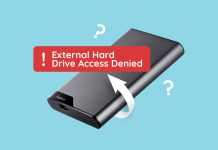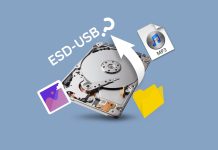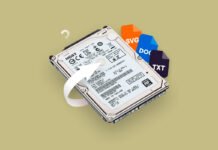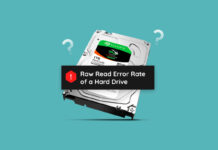
When your external hard drive isn’t being detected by your computer, it feels as though all of your data is locked, just barely out of reach. Even after performing the typical computer restart, there’s still no visible way to access your external hard drive’s contents.
This problem can happen for a number of reasons. Before you exhaust yourself trying to get into the external hard drive, read on to find out how to recover external hard disk data when it is not detected.
Why the External Hard Drive Is Undetectable
External hard drive problems present themselves in many forms. If your external hard drive has suddenly become unreadable by your computer, here are a few common problems that could have caused this to happen:
| Problem | Description |
| ❌ Improper device removal | If you don’t remove your external hard drive safely, important write processes may be interrupted that could corrupt your files, or worse, your file system. |
| 💾 External hard drive corruption | Corruption to the file system of your external hard drive may result in it failing to be read by your Windows computer. |
| 🔧 Outdated or corrupted drivers | Drivers are responsible for the communication between your hard drive and computer. If they’re out-of-date or corrupted, this communication may break down until resolved. |
| 💥 Hardware malfunction | Physical damage to the external hard drive is often the most severe and can render the drive permanently unreadable, depending on the damage. |
External hard drive troubleshooting is fairly easy once you know what the cause is. However, before we jump intohow to recover files from an external hard drive that’s not detected, we need to know how to confirm its status in Disk Management.
- Right-click Start and click Disk Management.
- Confirm your disk is visible and reading the correct capacity.
If the drive is not appearing, or it is appearing with the wrong capacity, jump ahead for our specific ways to fix external hard drives that aren’t visible at all.
Fixes for External Hard Drives That Are Visible in Disk Management
If your external hard drive is visible in File Explorer or Disk Management and it’s reflecting the correct size, you have a good chance at fixing it. The solutions below have proven effective for some of our readers in restoring access to external hard drives, with some even allowing you to recover an external hard drive without formatting. Be sure to attempt each of these solutions in order to avoid mistakes that could lead to permanent data loss.
Method 1: Recover Data With Data Recovery Software
Your first go-to is data recovery software for a hard drive not detected. As you’re unsure what has caused it, each action you perform (even fixes) could be detrimental to your data. Therefore, our first step is to create a copy of your external hard drive and recover what data you can. To do so, we’re going to use Disk Drill. While there are other backup options out there, Disk Drill is good because it works with corrupted, RAW, and undetected external hard drives, shows you a visual map of any unstable sectors it finds, and lets you recover the data all in one application.
Follow these steps to back up and recover data from an external hard drive that’s not recognized:
- Download Disk Drill and open it.
- Click Byte-to-byte Backup.
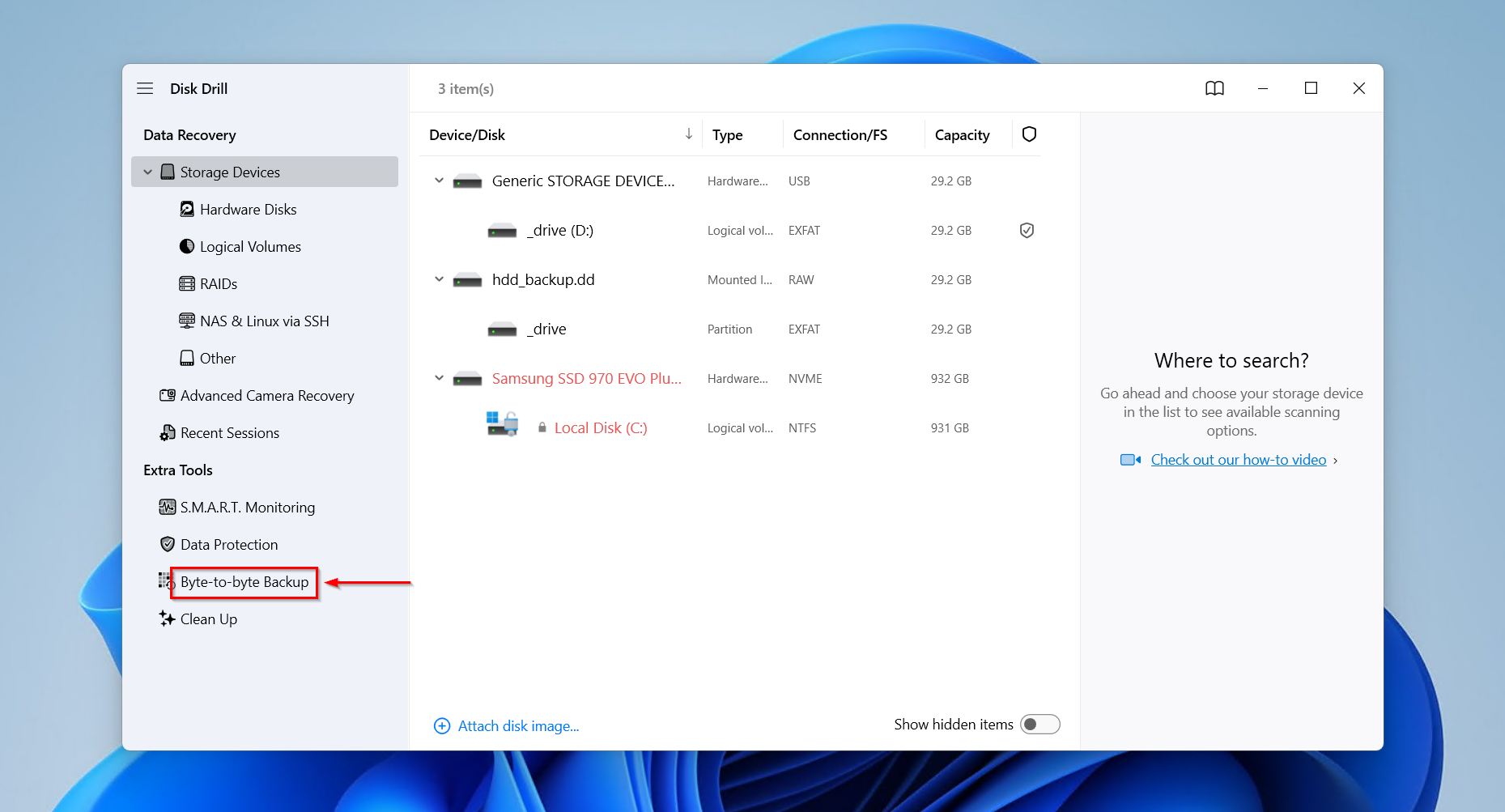
- Select your external hard drive, then click Create backup.
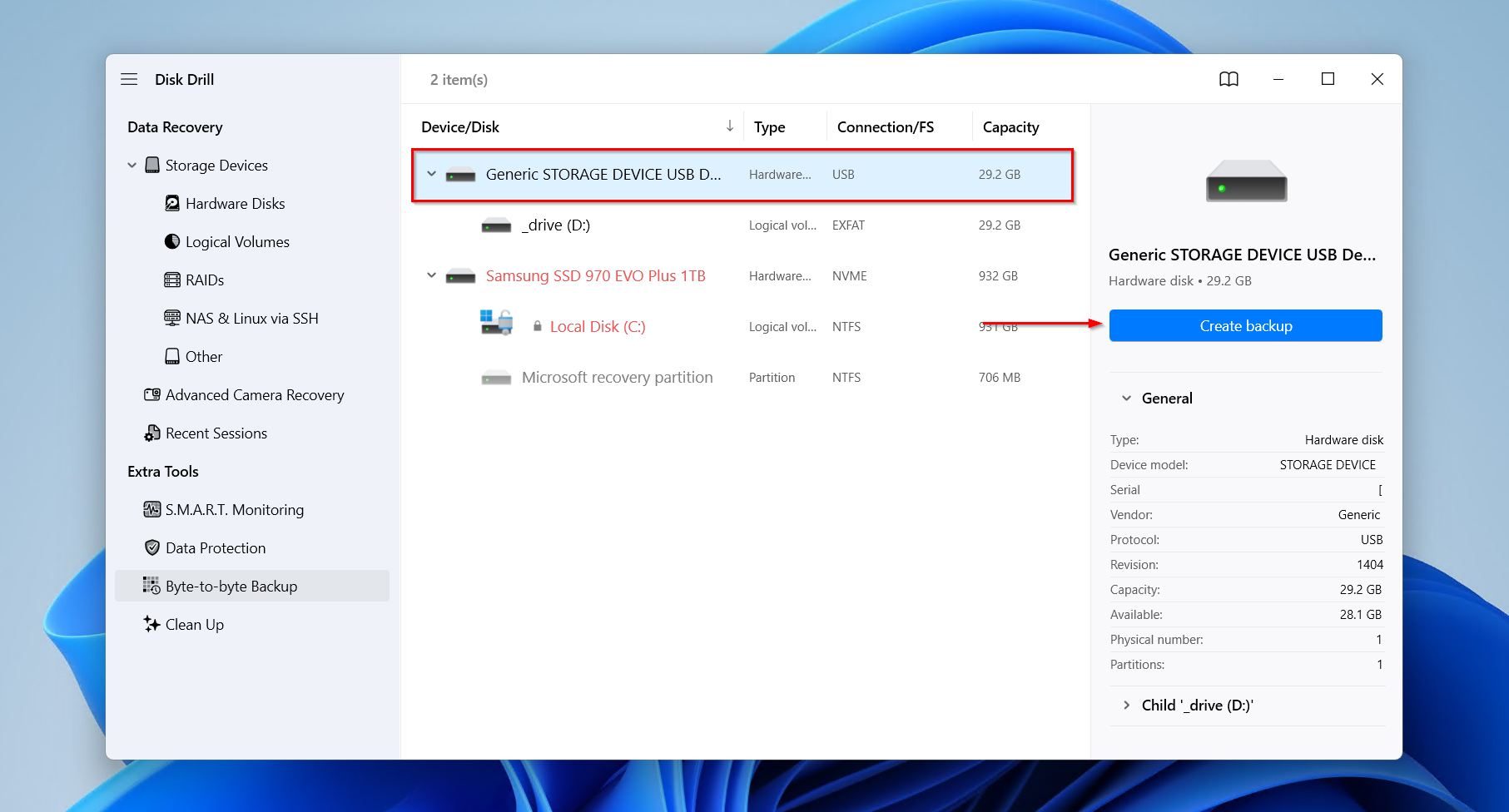
- Give the backup a name, choose where to store it, then click OK.
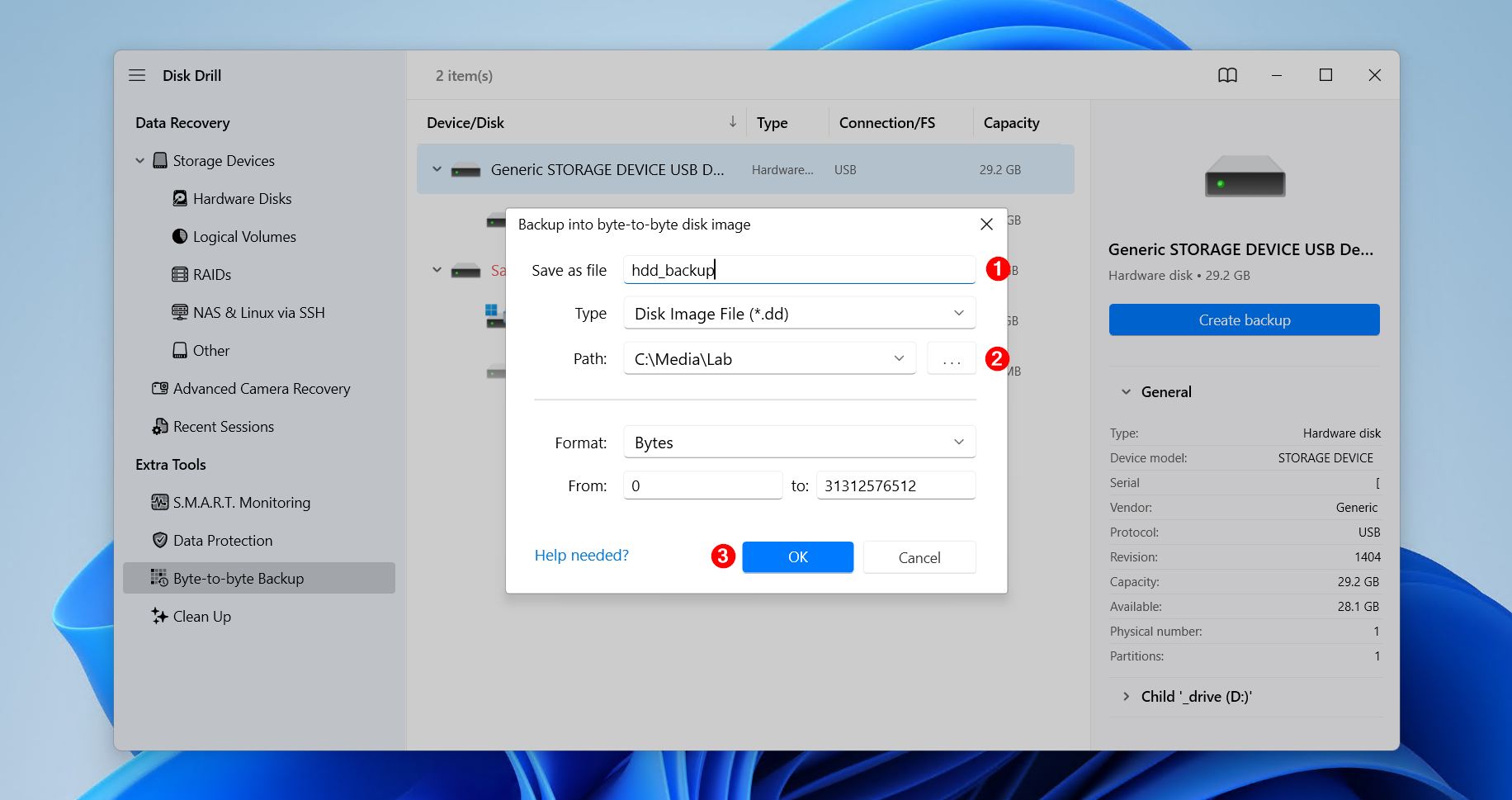
- Return to the Storage Devices tab when finished, then add your disk image using the Attach disk image option.
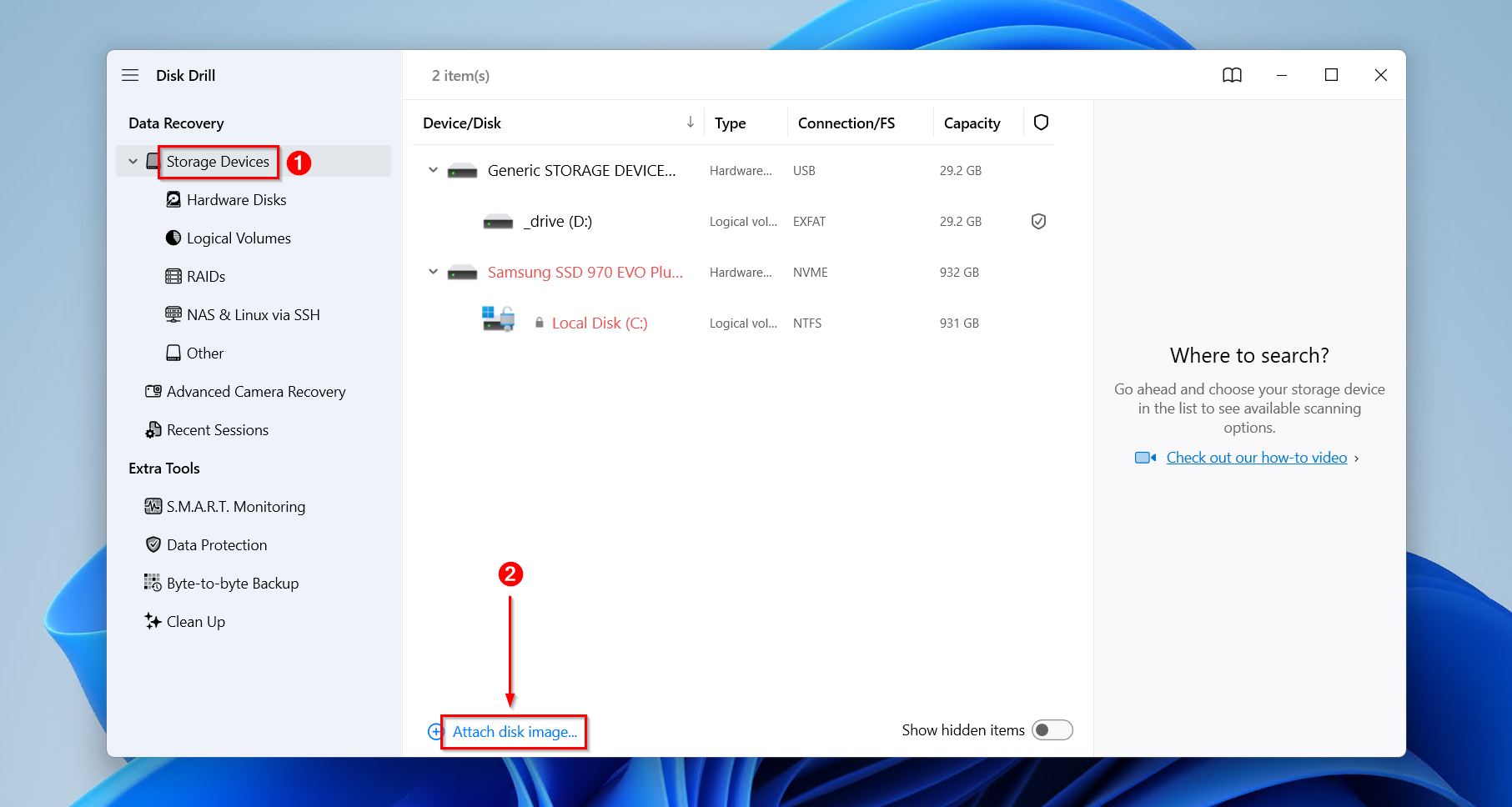
- Select the byte-to-byte image (or drive directly, if you skipped backing up), then click the Search for lost data option.
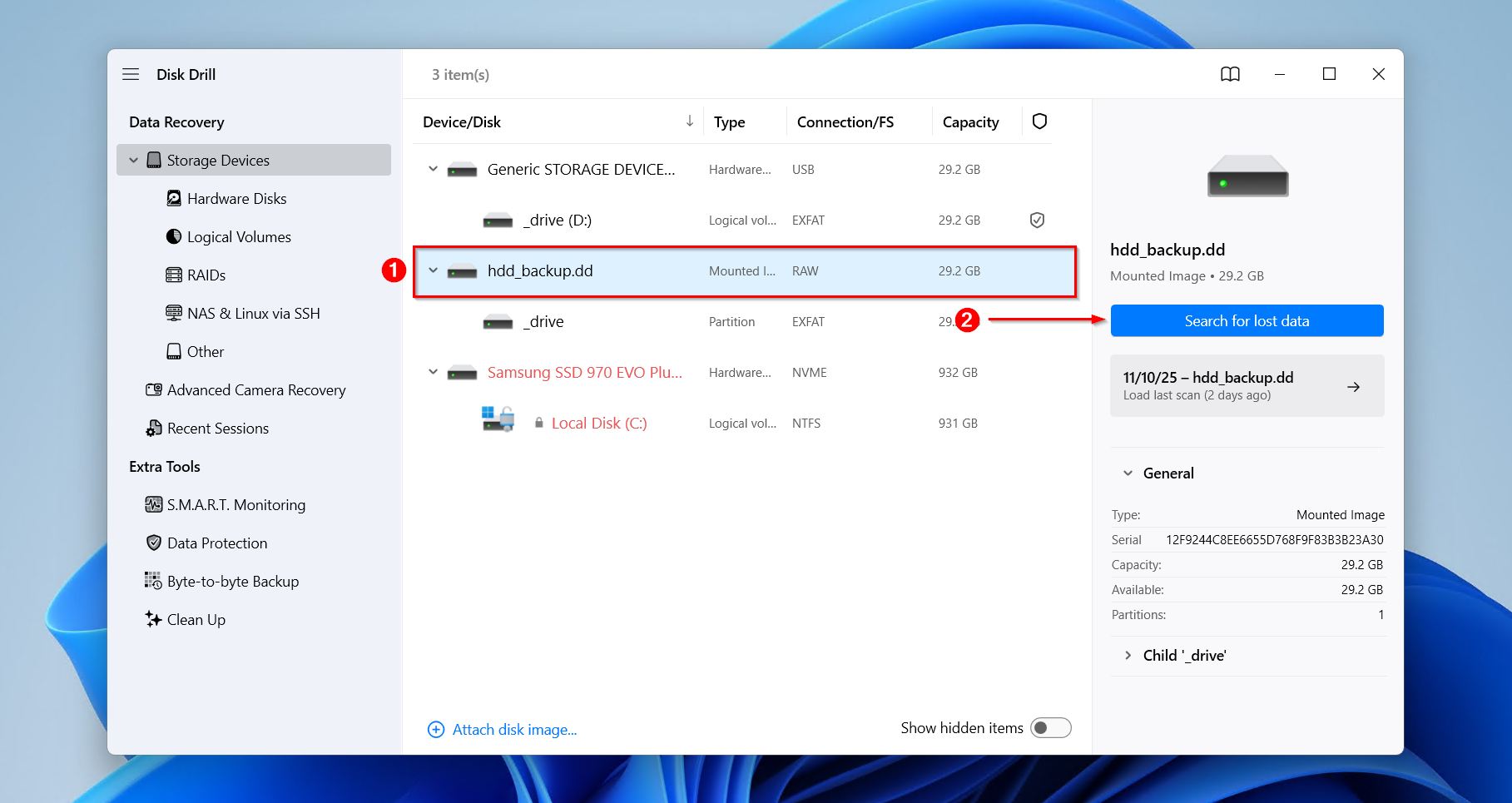
- Click Universal Scan for Disk Drill to find as much data as possible. Advanced Camera Recovery is for recovering fragmented videos from cameras and drones.

- Click Review found items when the scan is complete.
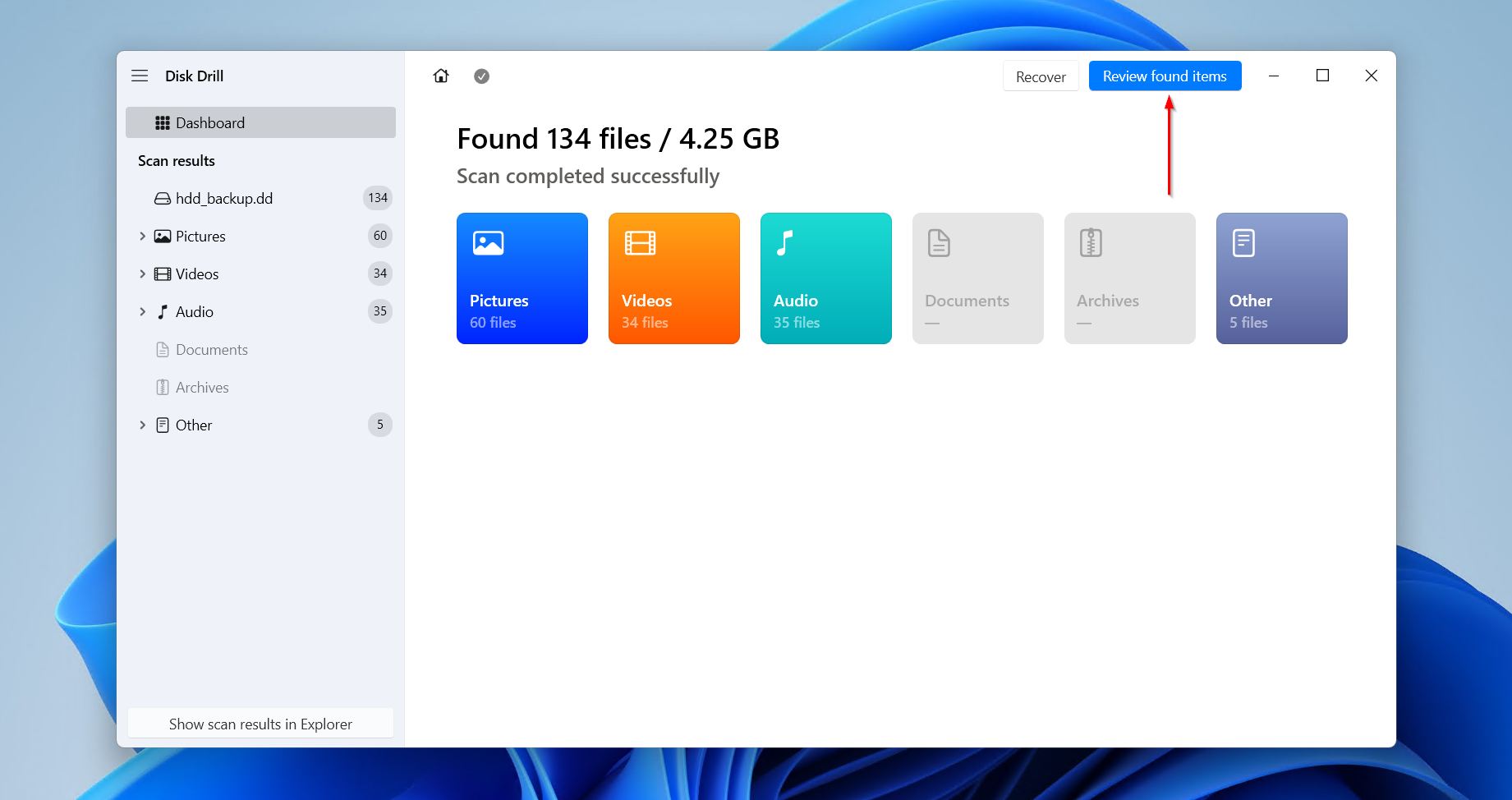
- Mark the files you want to recover from the byte-to-byte copy. If a file has a preview, it means it can be recovered. Otherwise, the recovery chances column also indicates your chances of recovering each file. When ready, click Recover.
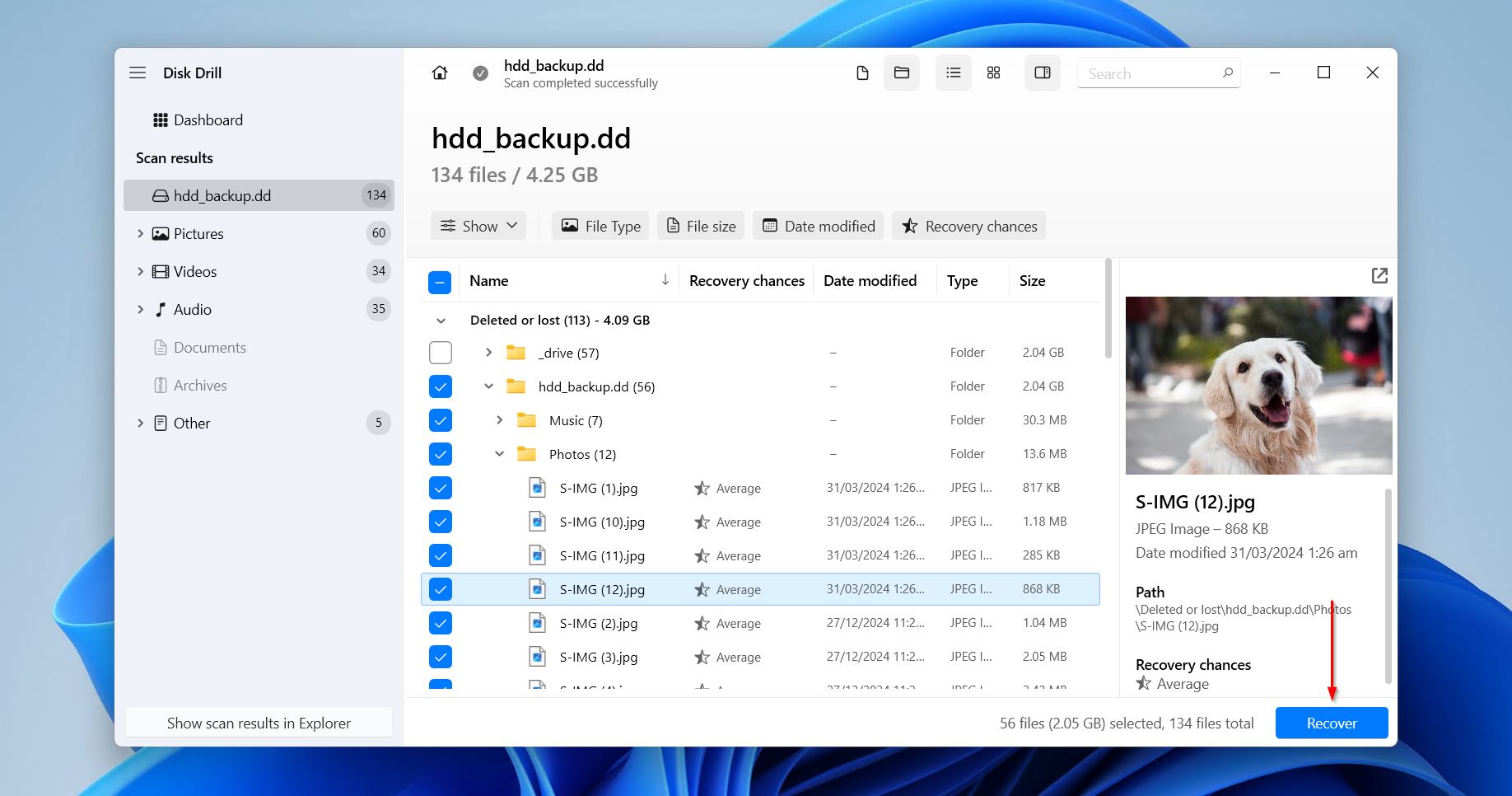
- Specify an output location that isn’t on your external hard drive, then click Next.
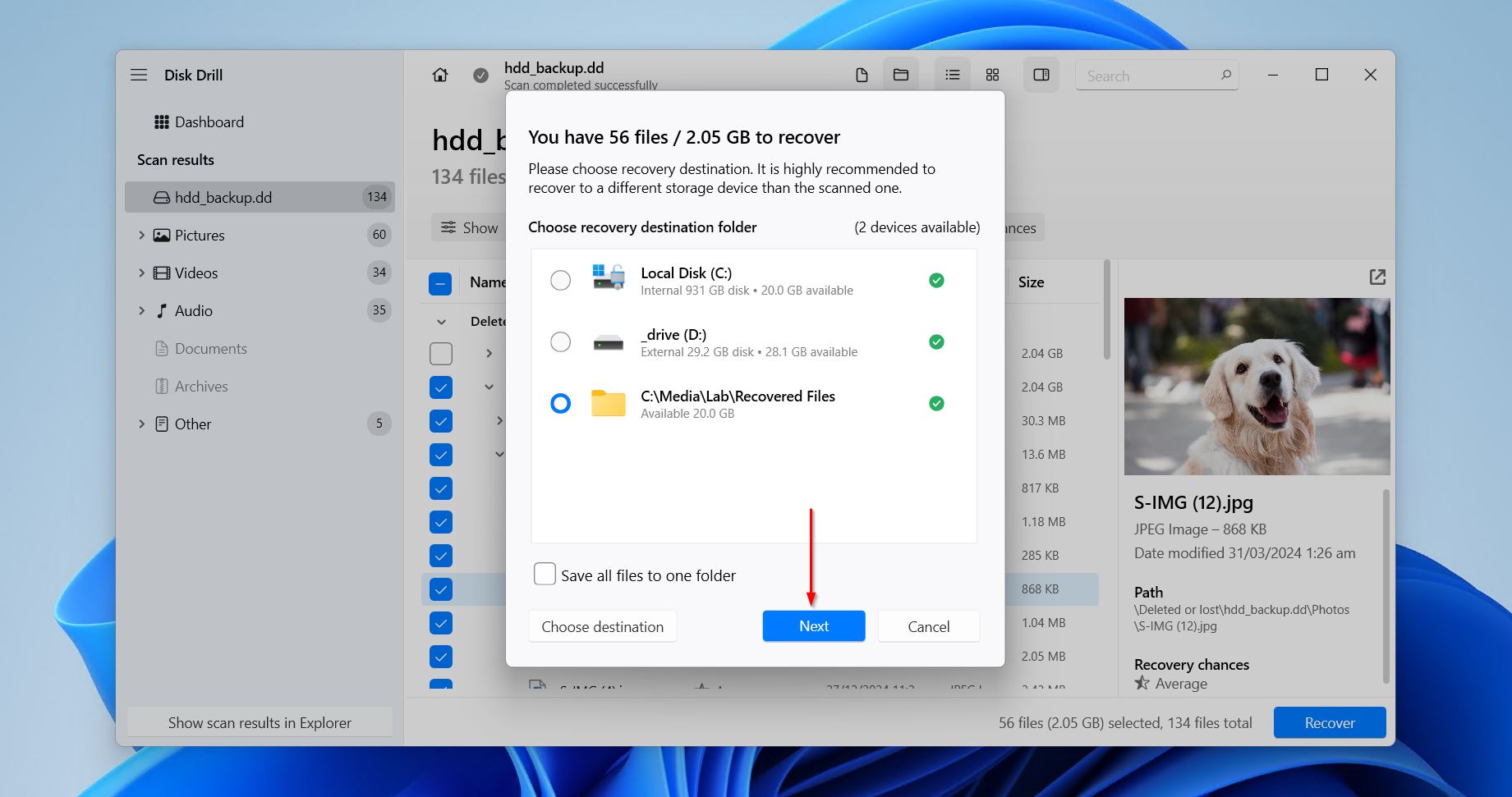
As demonstrated, Disk Drill makes it easy to learn how to recover data from an external hard disk which is not detecting, so long as the hard drive is readable and accurate in Disk Management.
Method 2: Assign a Drive Letter
As unlikely as it sounds, the external hard drive may be inaccessible through File Explorer solely because it’s missing a drive letter. Although technically Microsoft could forego this system, Windows continues to use drive letters for any attached storage to assign paths for the sake of backward compatibility.
This method will guide you through assigning a new drive letter to your external HDD:
- Right-click Start, then select Disk Management.
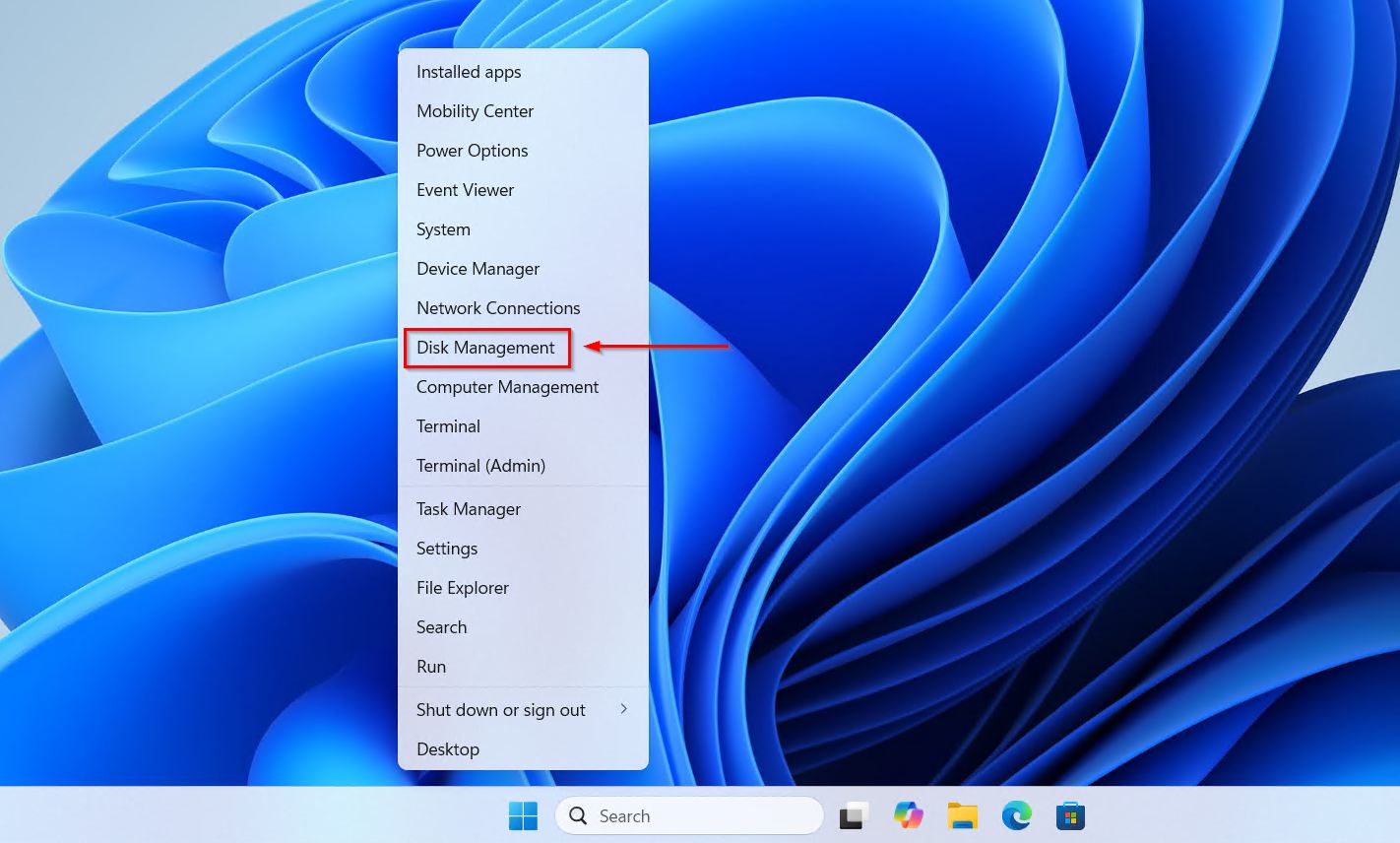
- Right-click the partition of your external hard drive, then select Change Drive Letter and Paths.
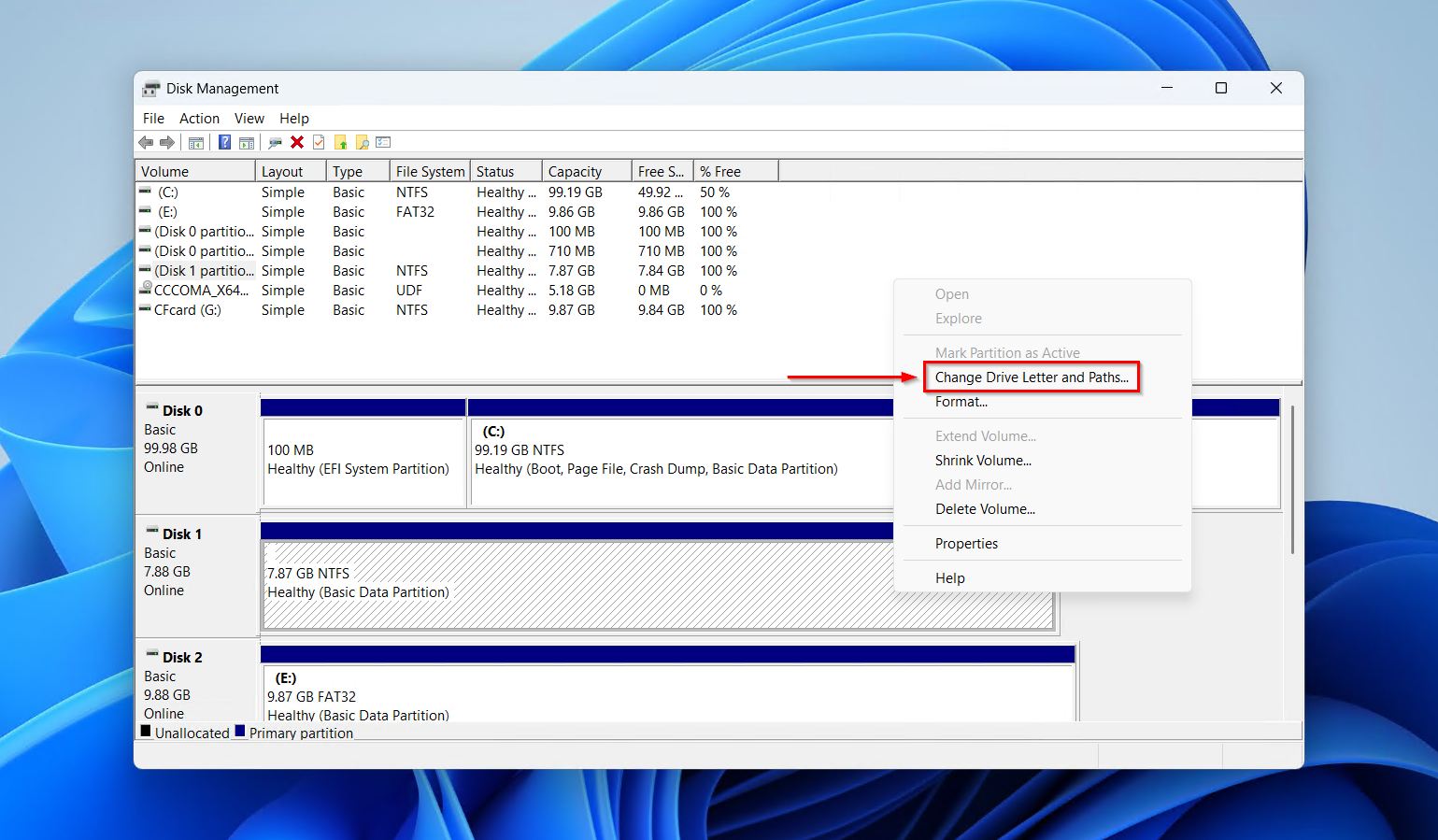
- Click Add.
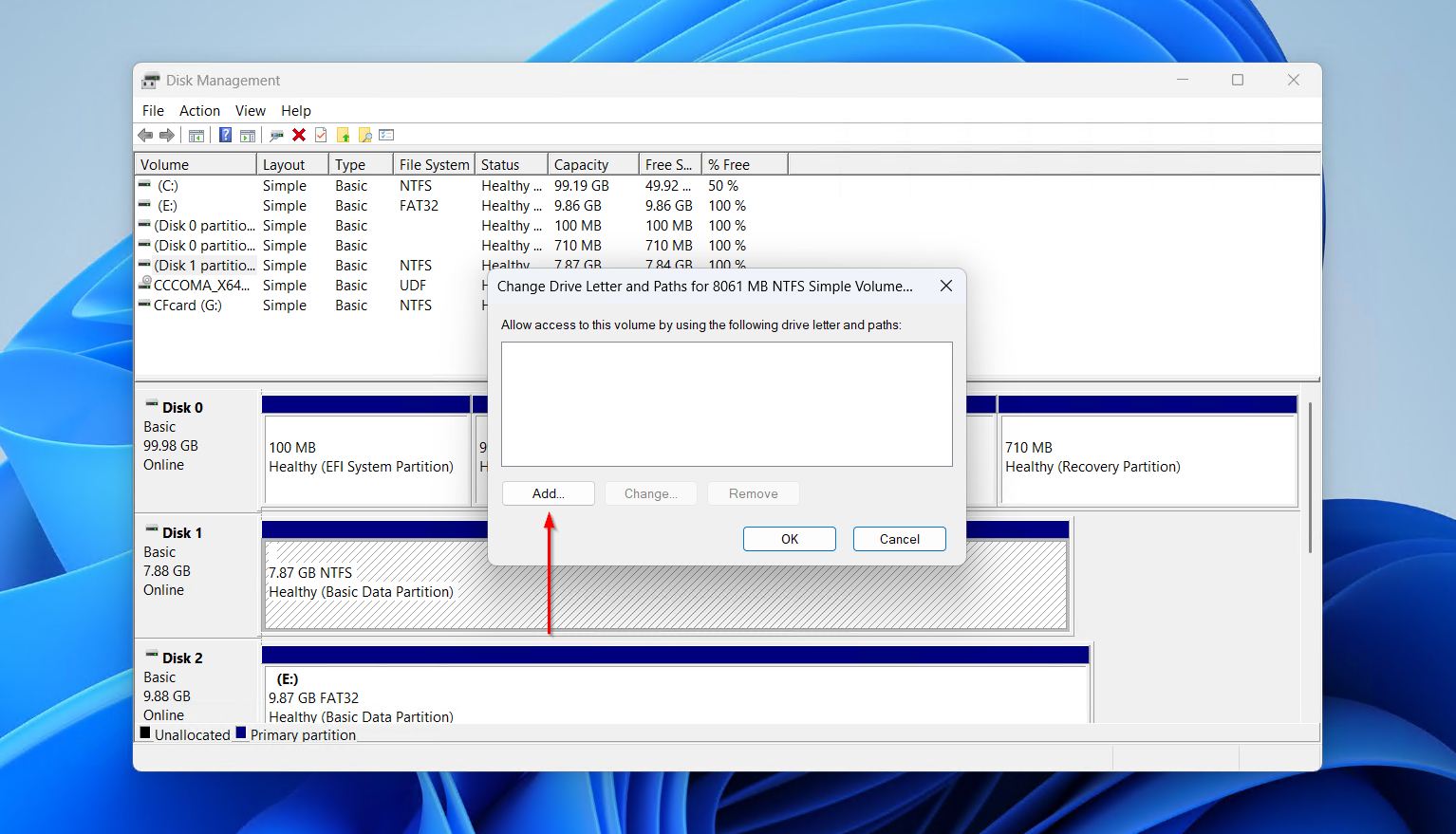
- Select a new drive letter from the dropdown, then click OK. Click OK again to finalize.
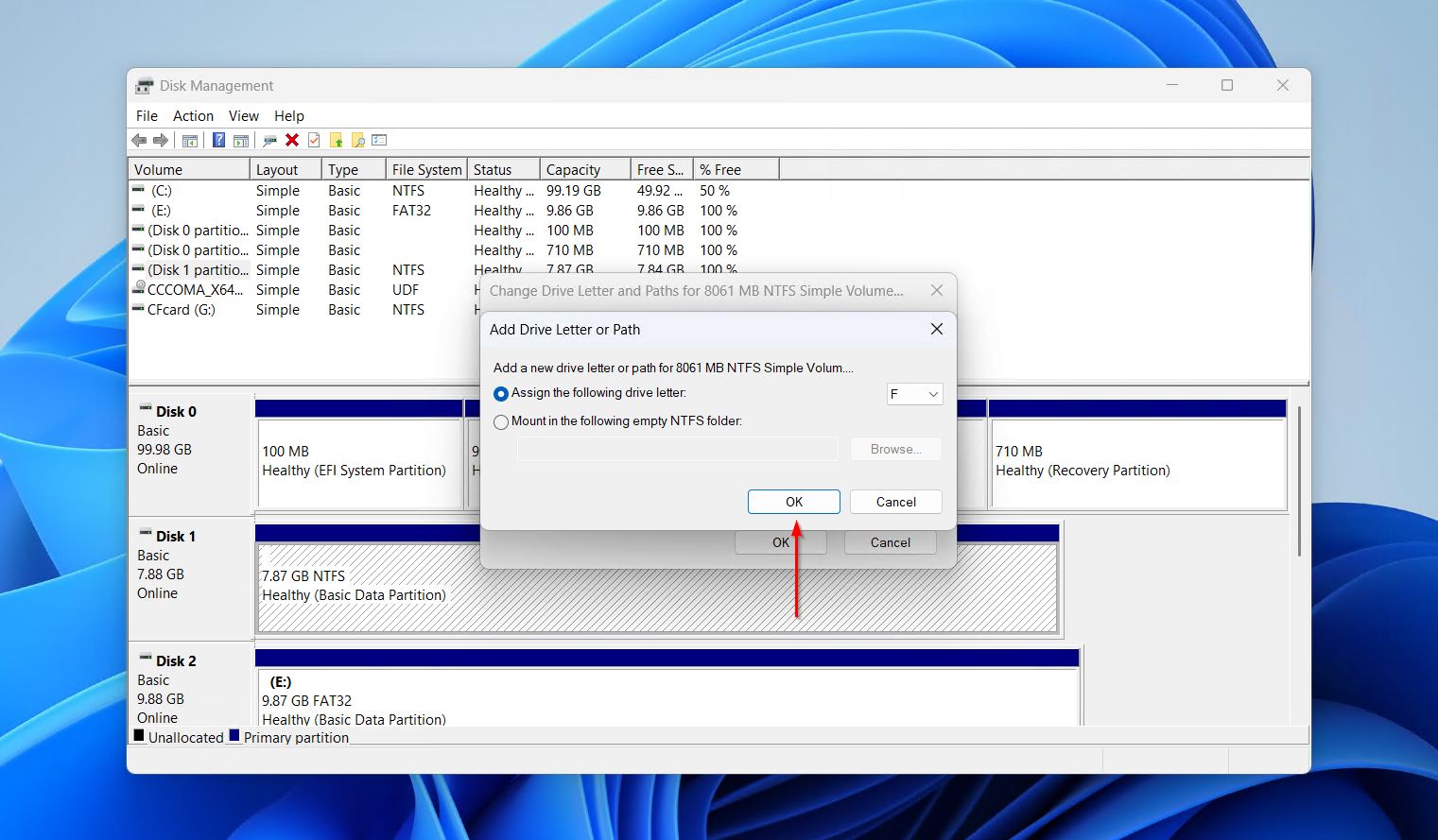
Method 3: Restore Partition with TestDisk
The external hard drive may not be appearing because its partition is lost. This can happen if it was corrupted or accidentally deleted. The entire partition can be restored with the partition recovery tool TestDisk. This tool restores the partition by correcting the underlying partition table.
TestDisk can be complicated. If you make a mistake by choosing the wrong option, it can render data recovery when the HDD is not detected impossible. These steps will guide you through doing it properly, but some screens may vary. If unsure, create a backup of your disk before proceeding.
Follow these steps to restore a hard disk that’s not detected and how to recover data with TestDisk:
- Download and extract the contents of TestDisk. Open testdisk_win.exe.
- Press Enter to create a new log file.
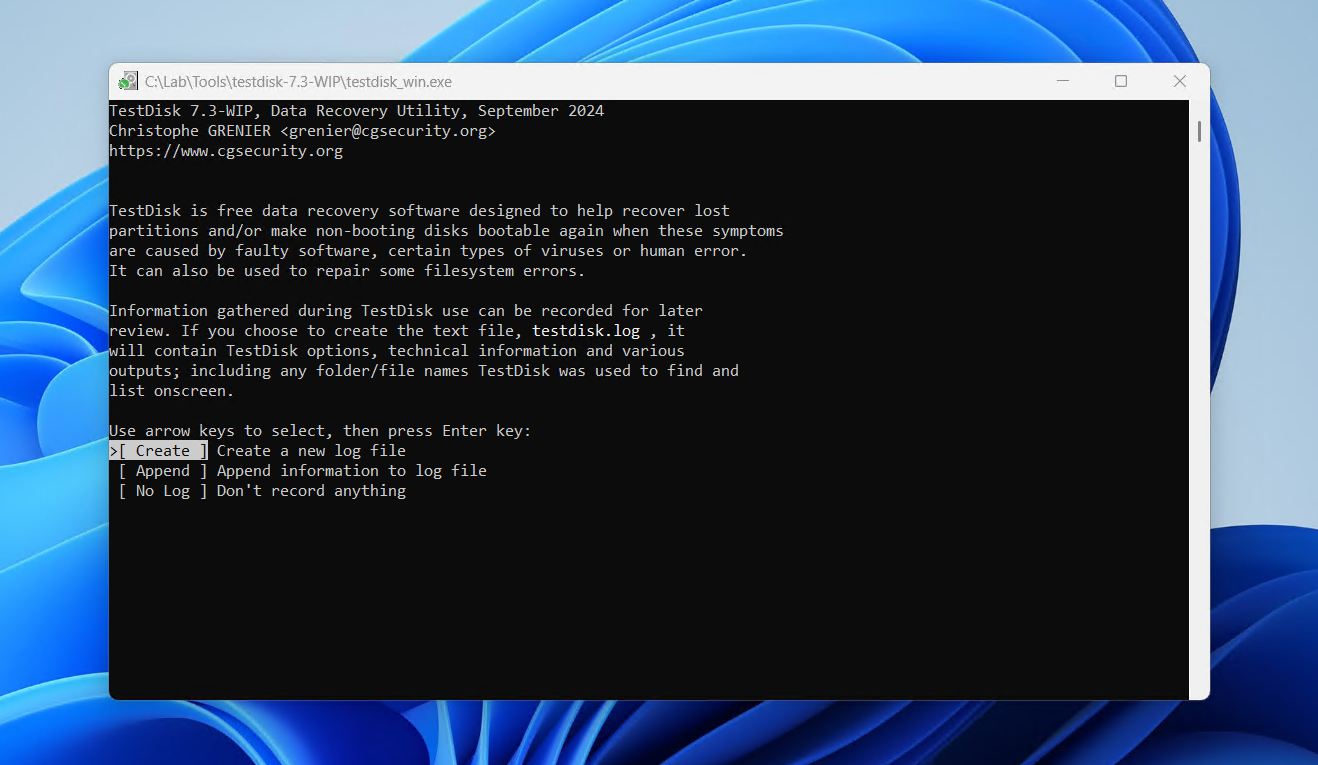
- Highlight your external hard disk, then press Enter.
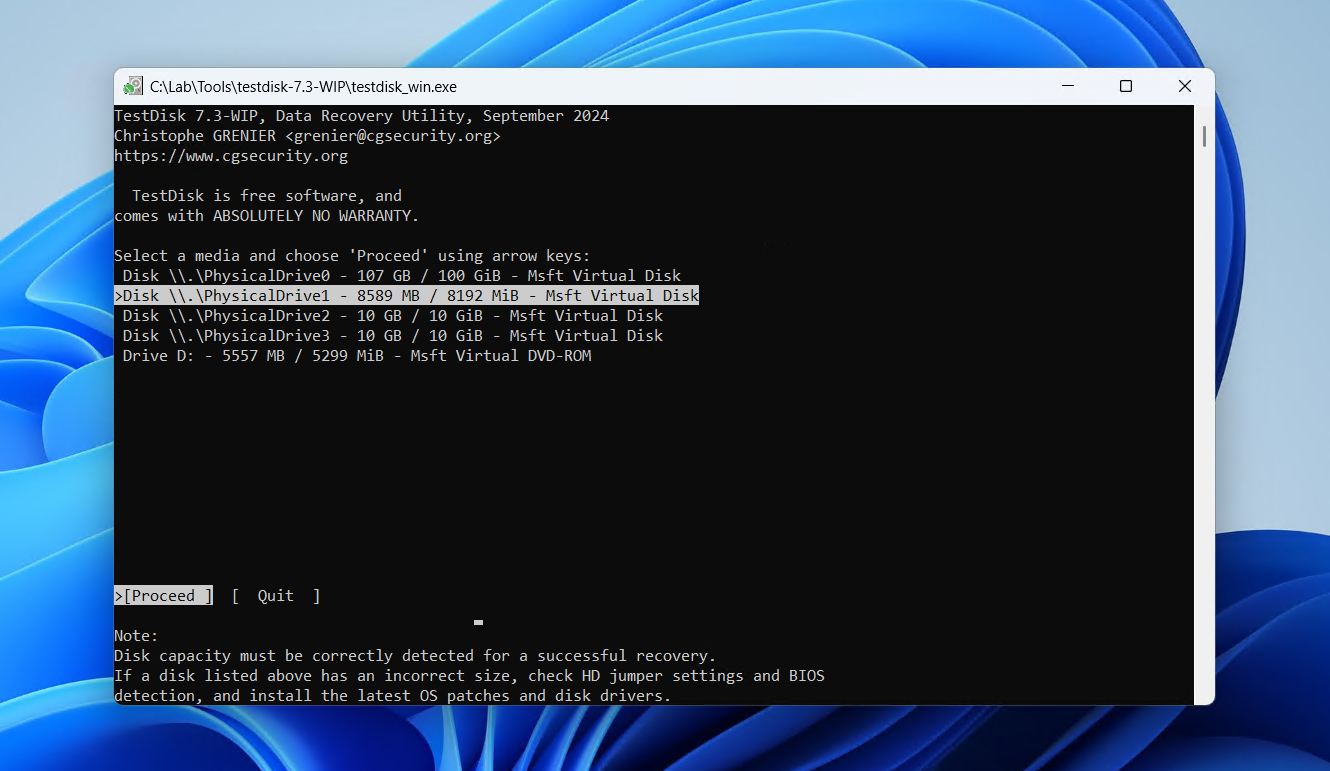
- Choose a partition table type and press Enter.
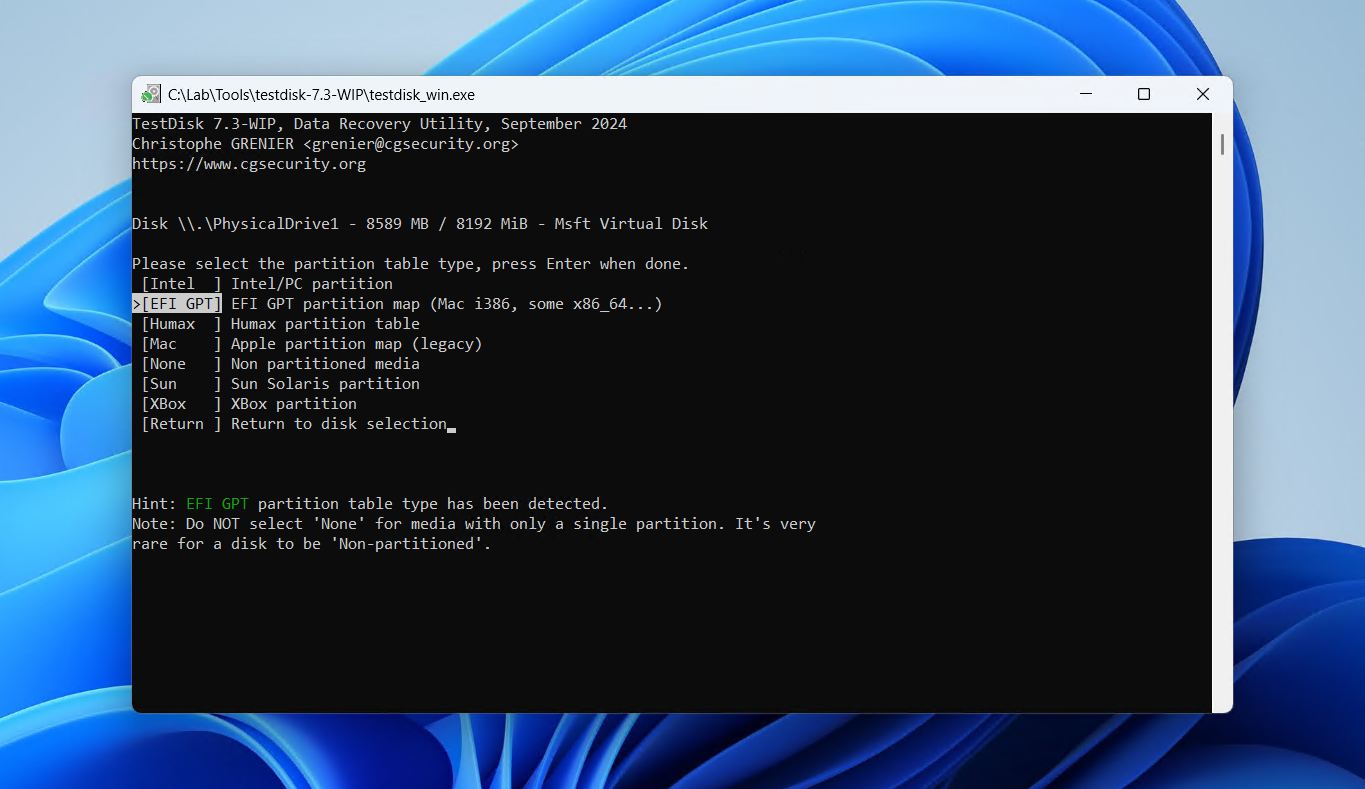
- Press Enter on the Analyse option.
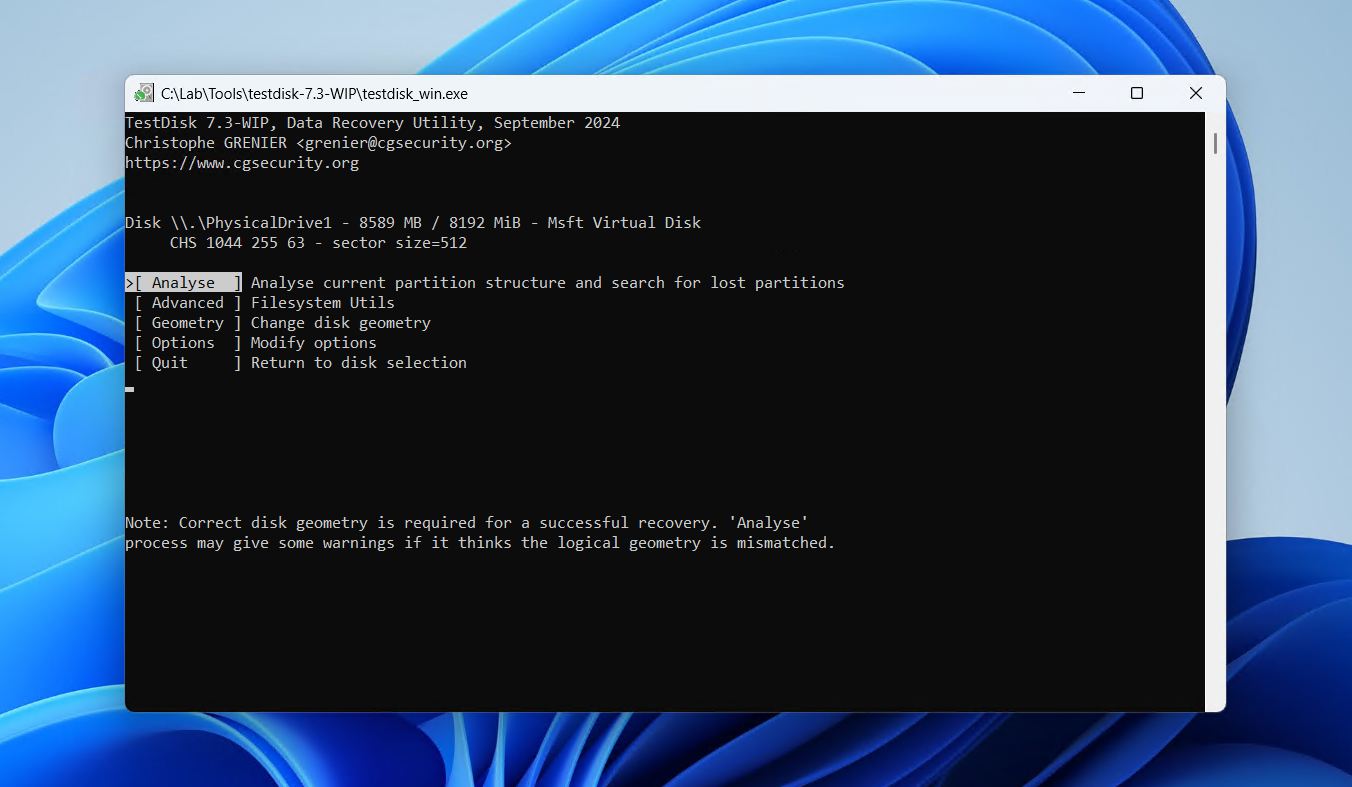
- Press Enter on Quick Search.
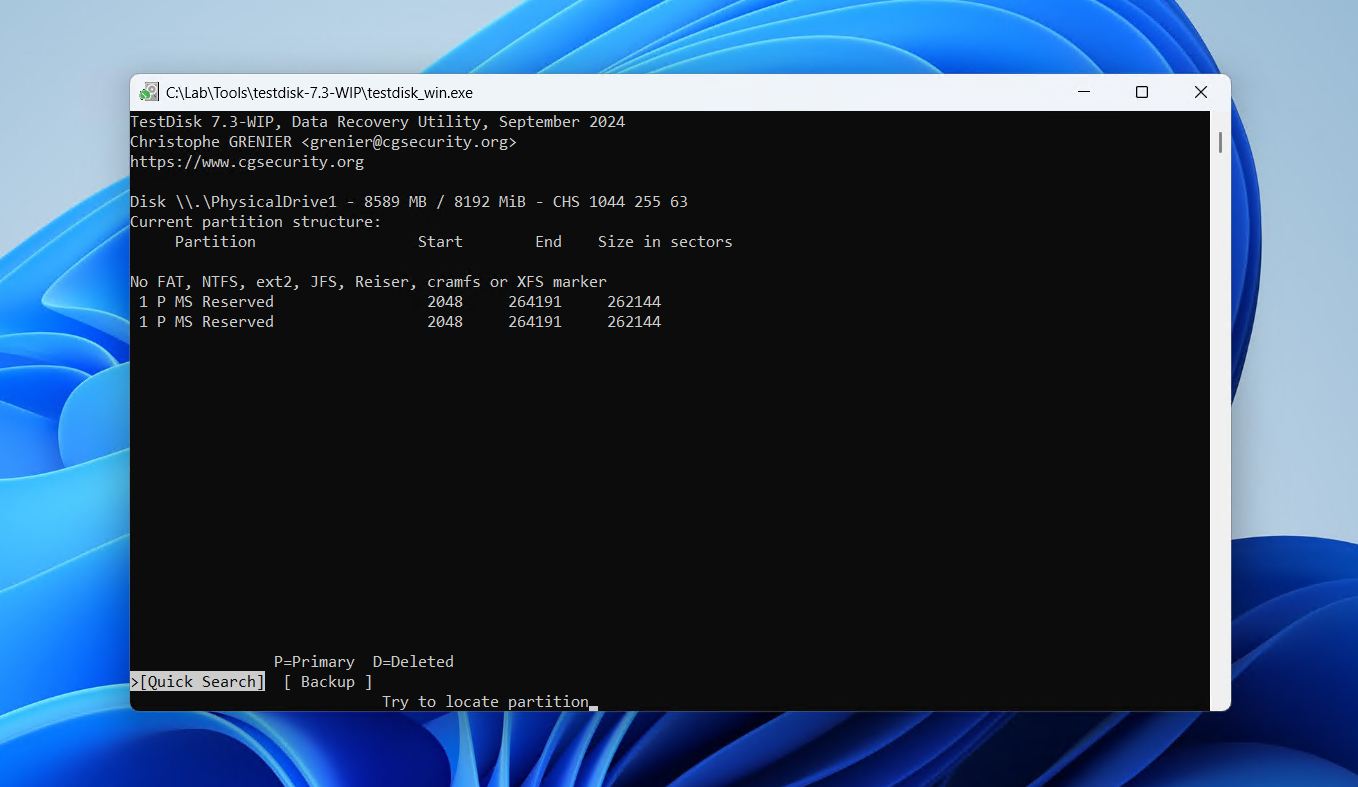
- Press Enter once the scan is complete.
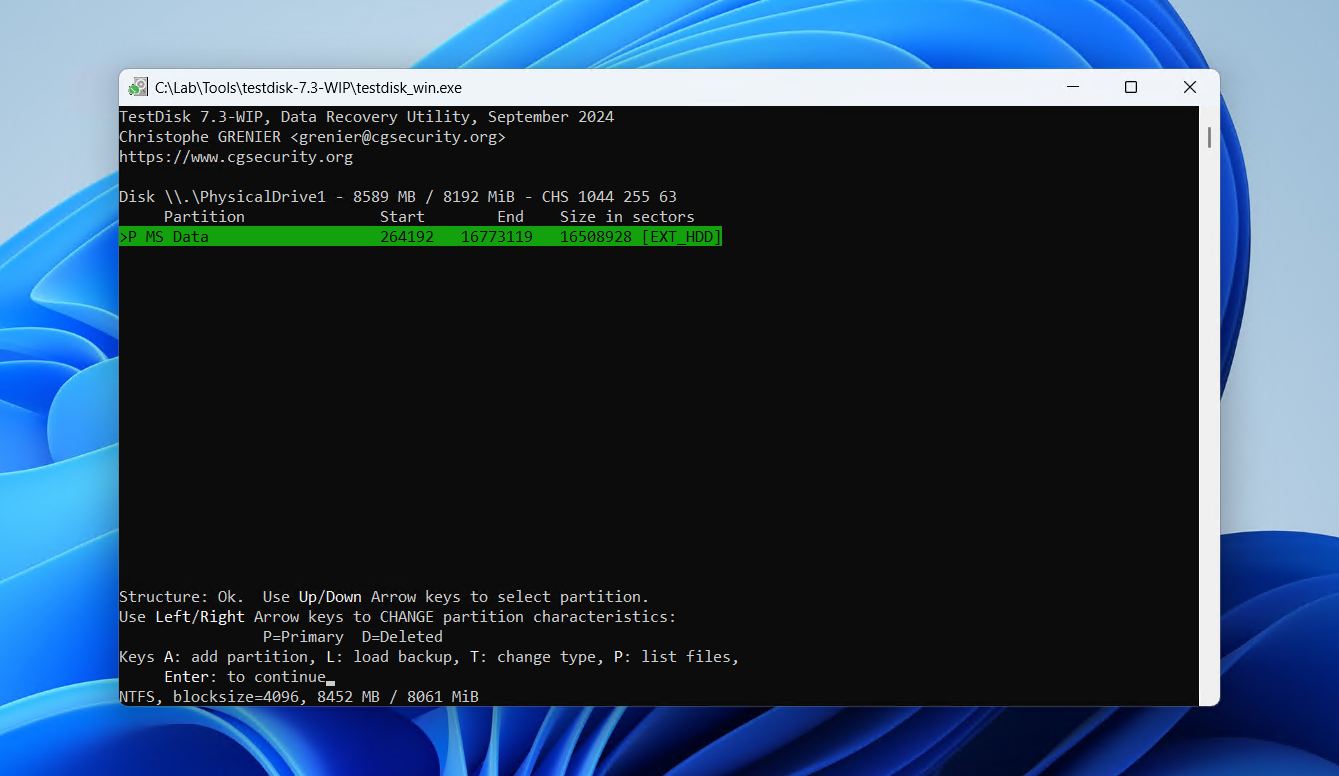
- Go to the Write option and press Enter. If your partition was not found, you may need to perform a Deeper Search first.
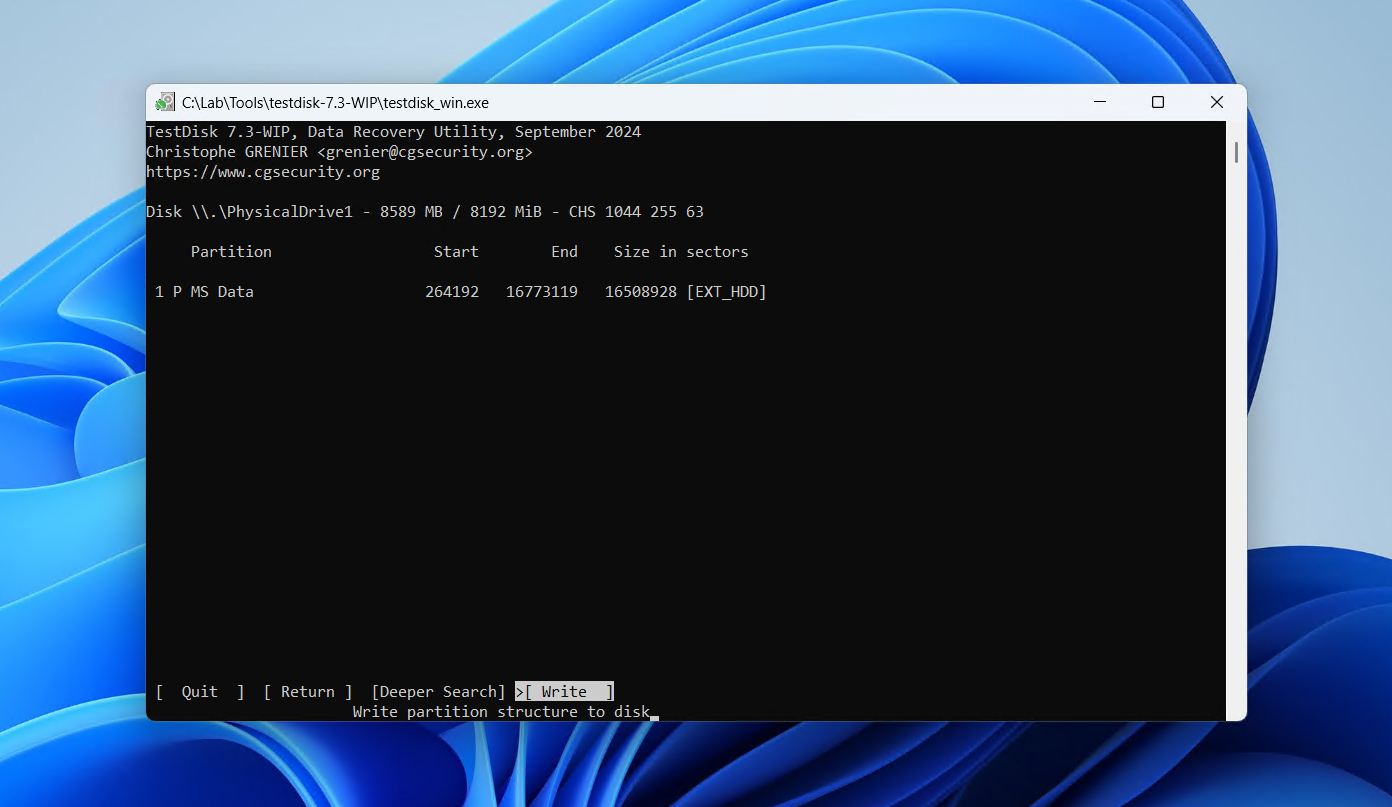
- Press Y.
Restart your computer, or safely eject and reconnect your external hard drive, for the fix to implement.
Method 4: Create a Partition on Unallocated Space
When your external hard drive appears in Disk Management with unallocated space, it means the partition that was previously there has been deleted or corrupted. In order to store data on the drive again, you’ll need to create a new partition and format it with a compatible file system.
Formatting does not recover any lost files. In fact, it deletes everything on the drive and will likely even overwrite data you need to recover. Before formatting, make sure all necessary data is recovered or backed up (in a byte-to-byte image).
These steps will show you how to format an external hard drive:
- Right-click Start, then select Disk Management.
- Right-click the block of your external hard drive with unallocated space and click New Simple Volume.
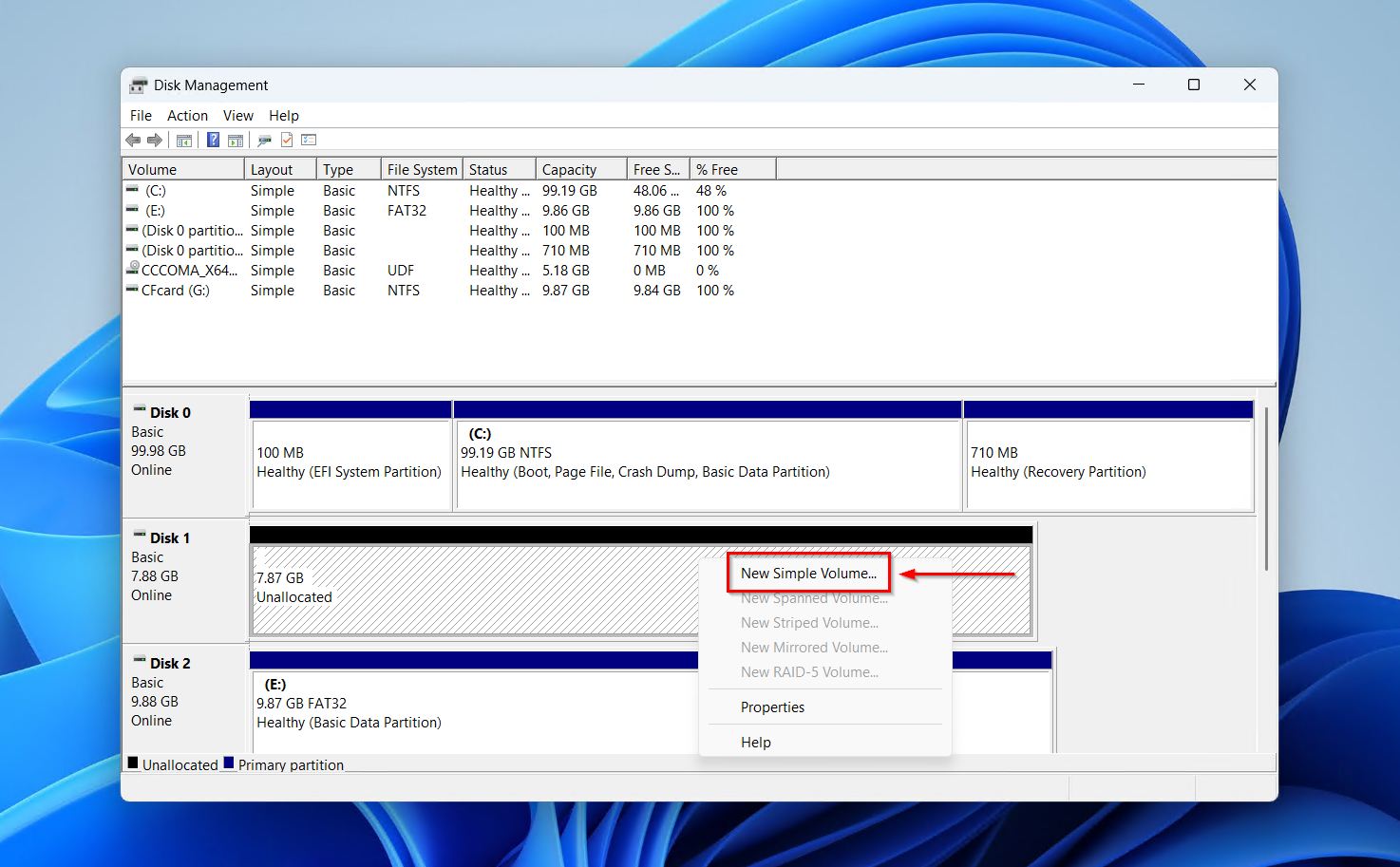
- Click Next.
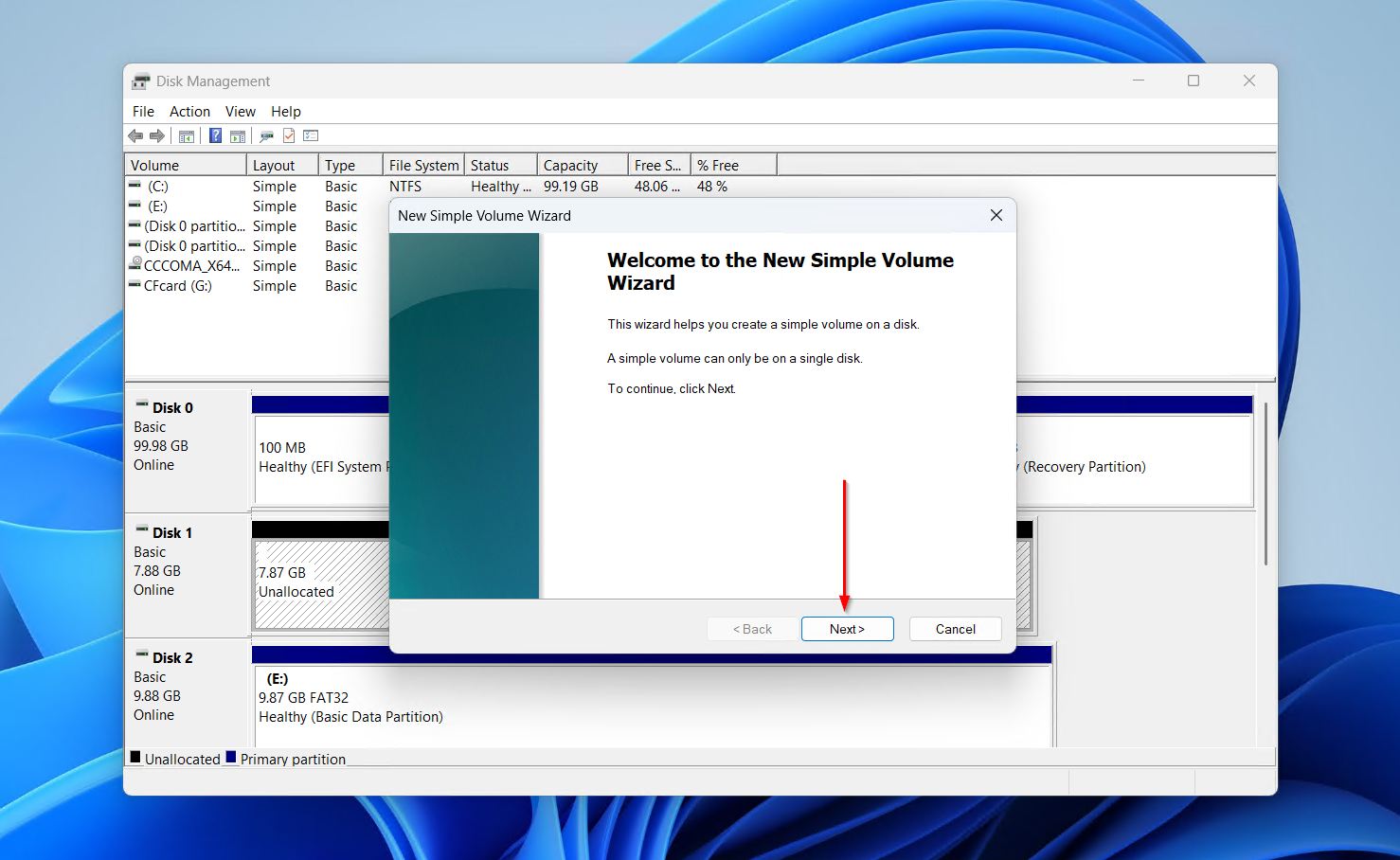
- Choose a volume size and click Next.
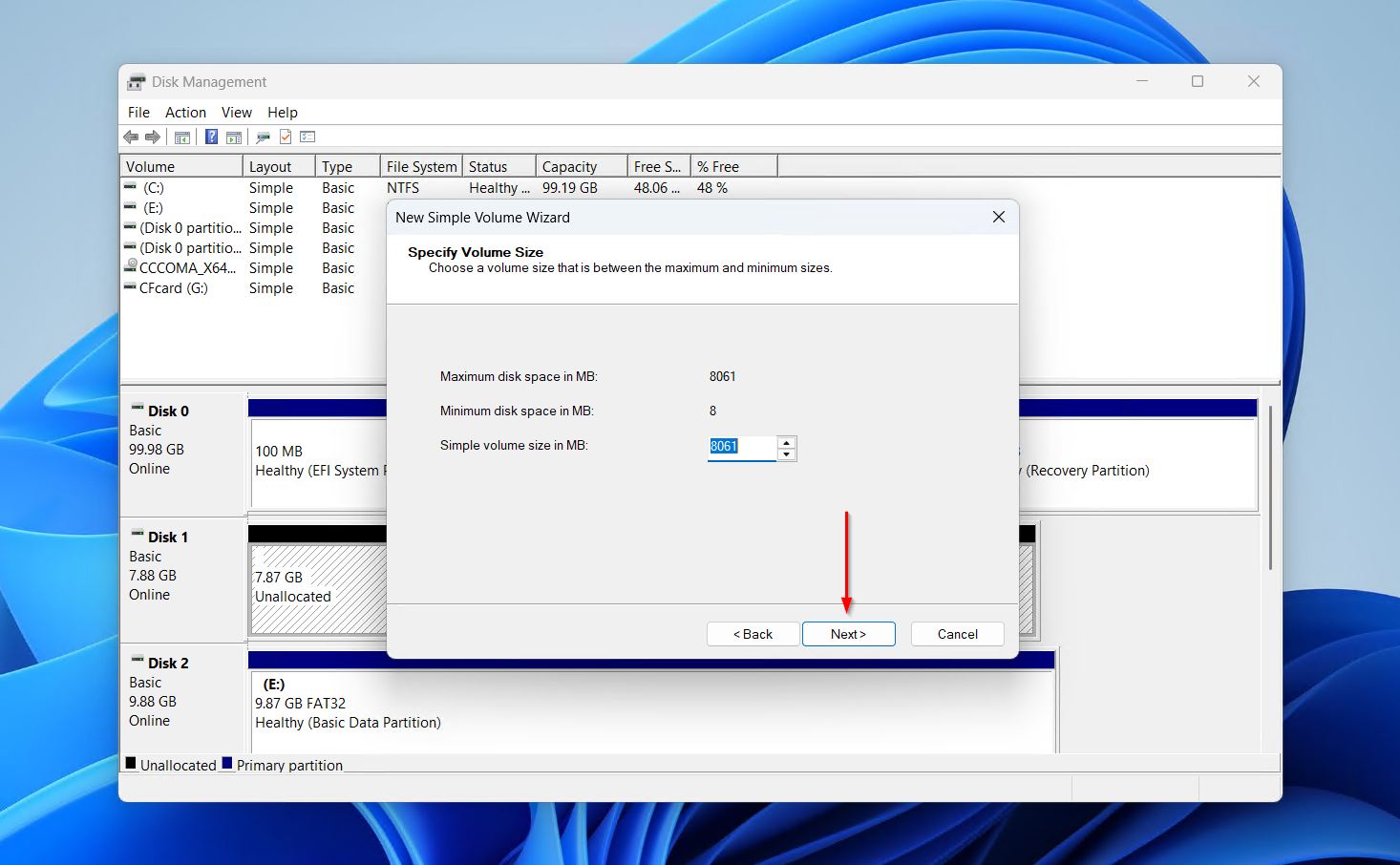
- Choose a drive letter and click Next.
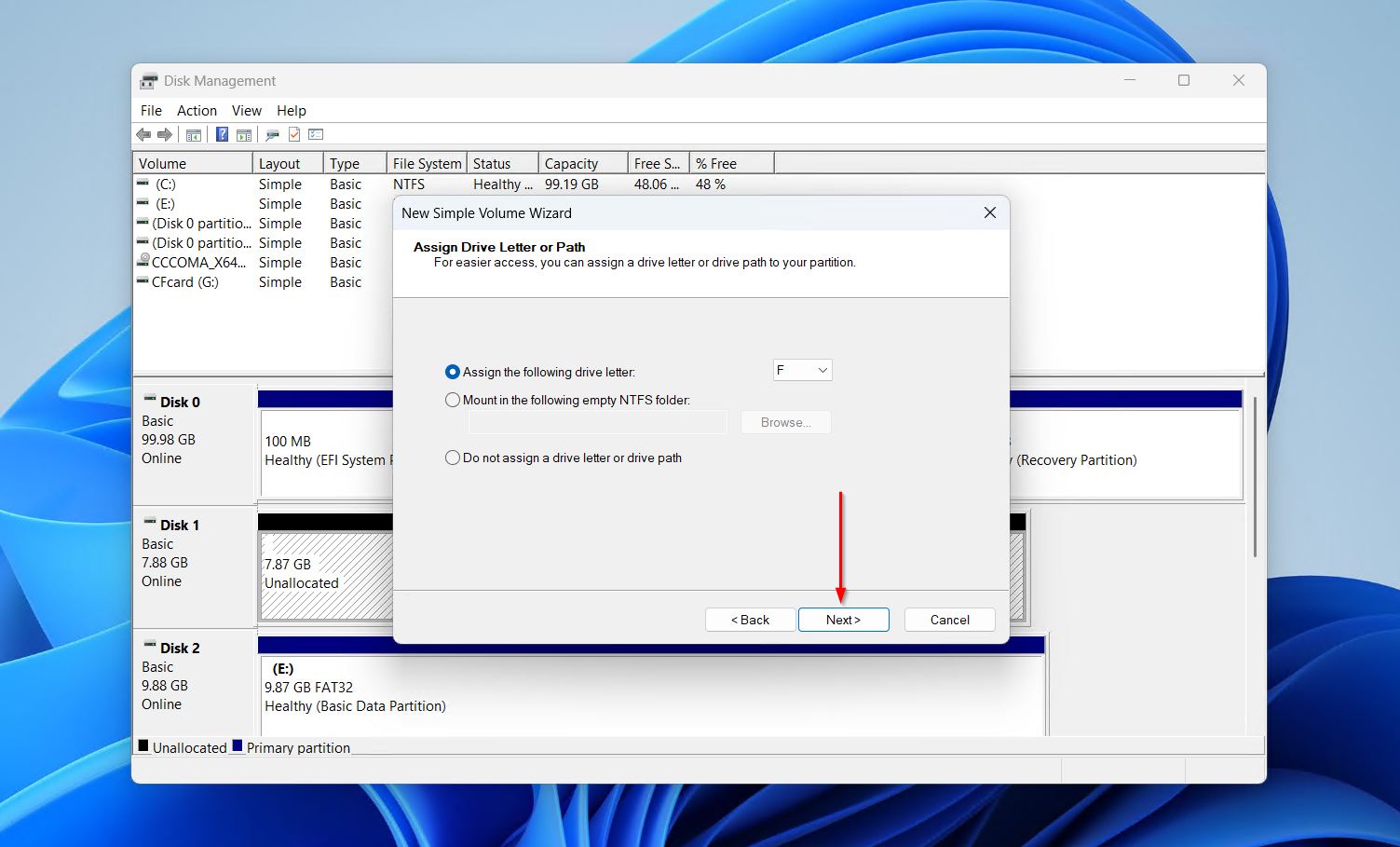
- Give the volume a label, make sure NTFS is selected and Perform a quick format is ticked, then click Next.
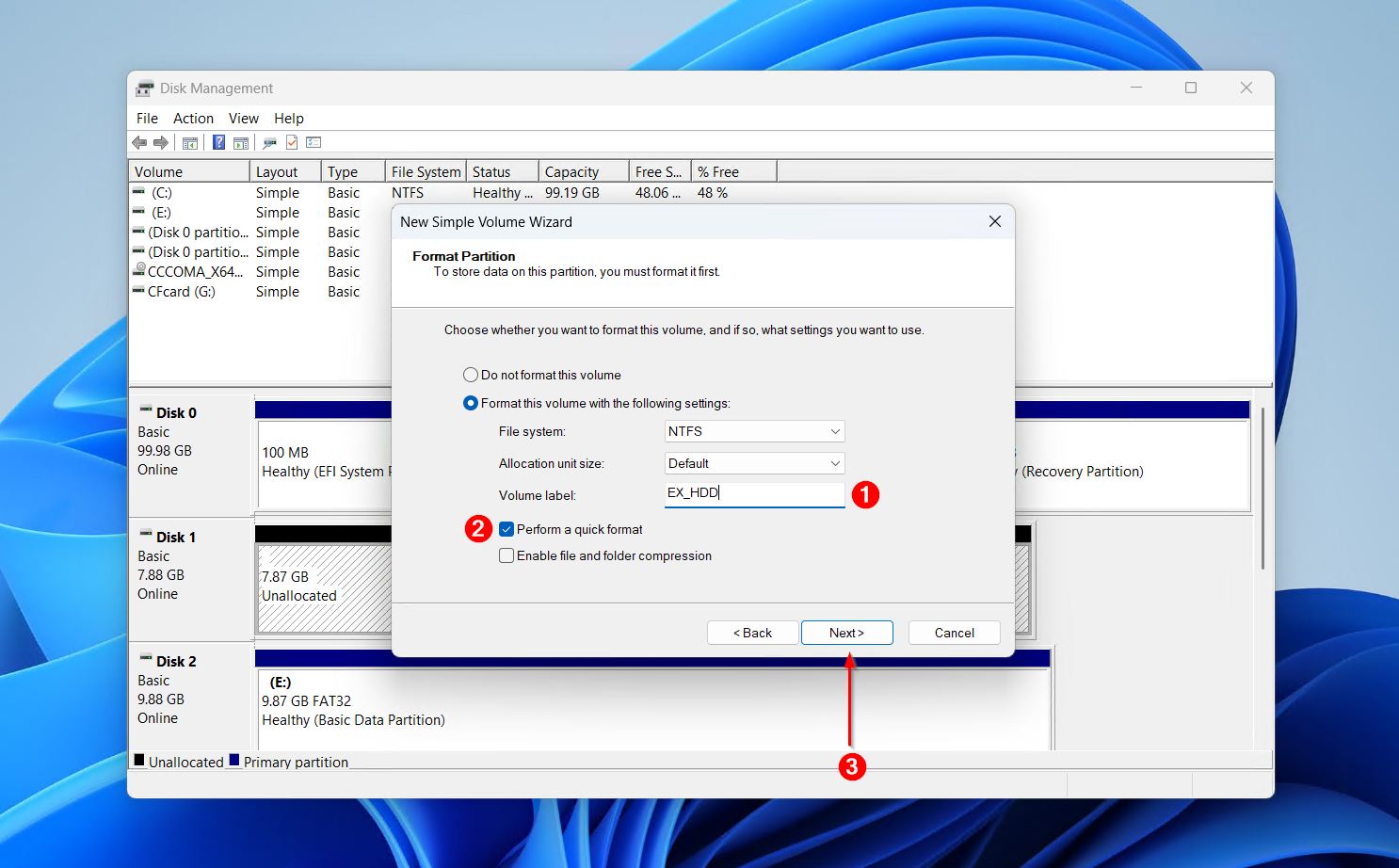
- Click Finish to confirm.
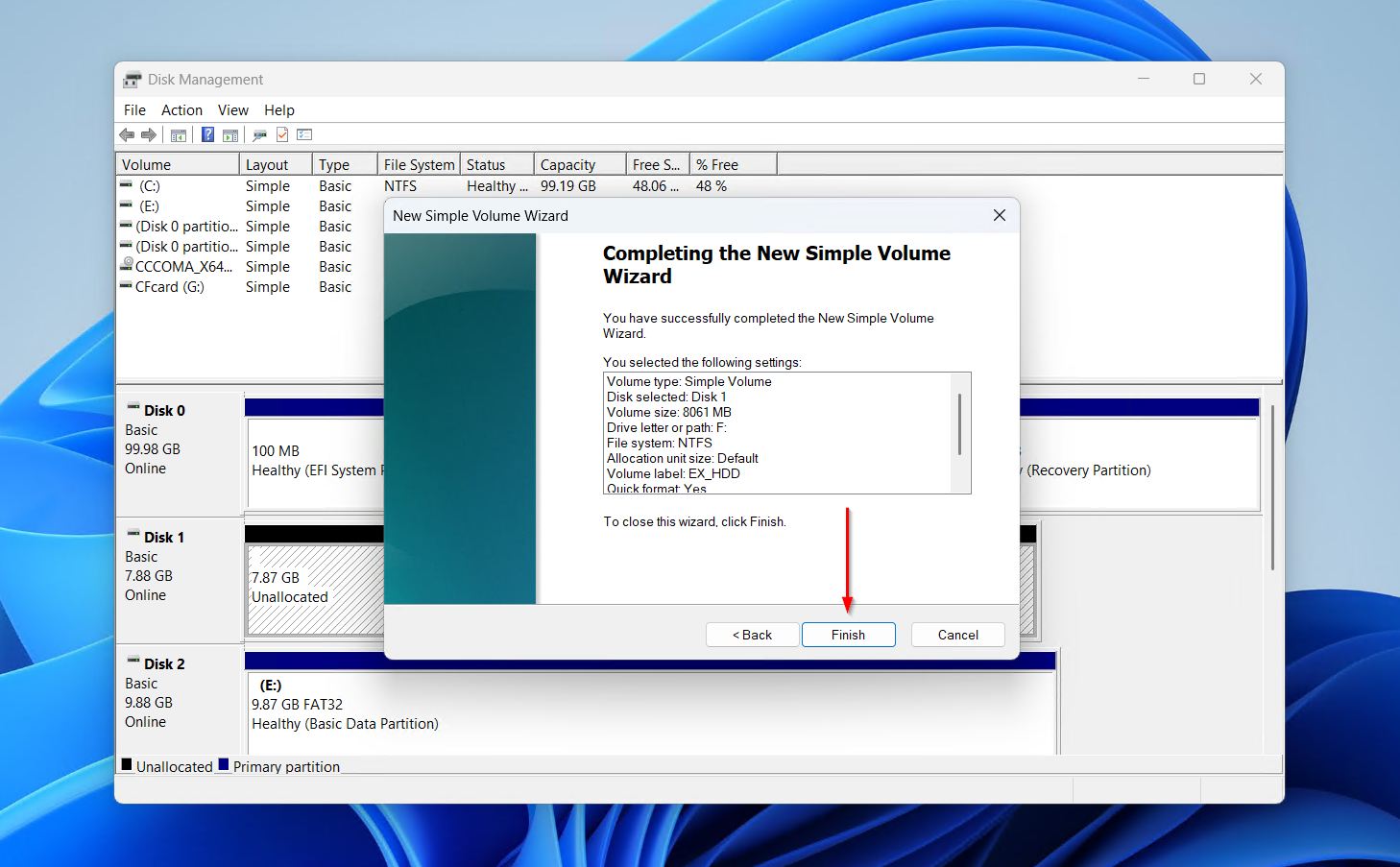
Fixes for External Hard Drives That Aren’t Visible at All
If your external hard drive isn’t visible in Disk Management, the damage may be more severe. In such cases, you have limited options.
Method 1: Connect With a Different Cable
Of course, it could be as simple as a faulty cable. If you’ve tried connecting your external hard drive to another computer and it’s still not working, try switching out the USB and power (if applicable) cables that you’re using to connect.
Additionally, check the connection point on your external hard drive to ensure the pins aren’t bent out of place. You can also inspect it for any foreign debris, like lint or dust, as it could be preventing a stable connection.
Method 2: Update the Drivers
As we mentioned earlier in the article, drivers are critical in establishing and maintaining communication between your external hard drive and your Windows computer. Without them, your external hard drive is unusable.
This method applies more to hybrid disks, and others of less common design, as regular disks use the general drivers included with Windows, which are kept up-to-date automatically.
These steps will show you how to update your external hard drive’s drivers:
- Right-click Start and select Device Manager.

- Expand the Disk drives drop-down. Right-click your external hard drive, then click Update driver. If your drive doesn’t appear in the list, it may appear as an unknown device in the Other devices dropdown.
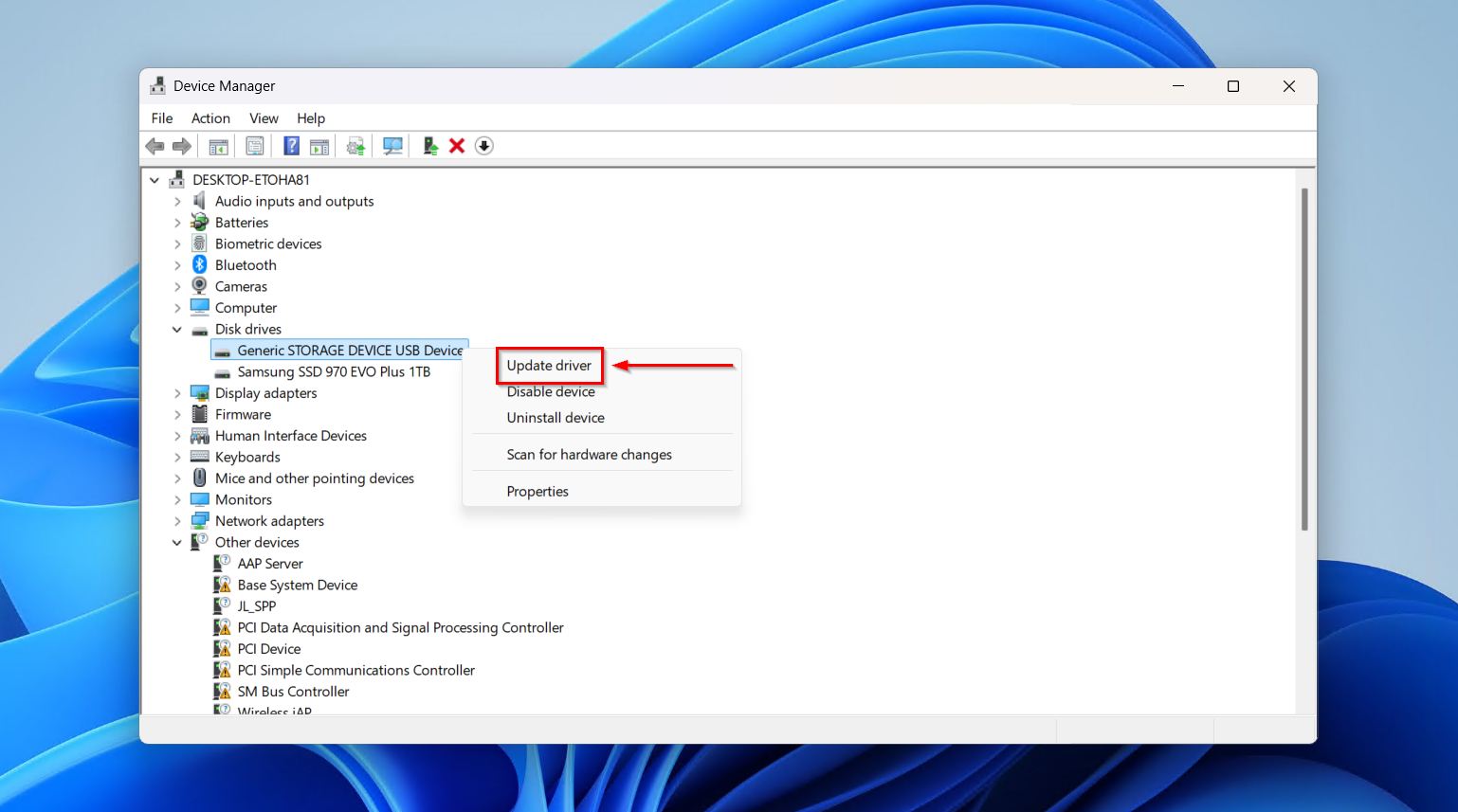
- Click Search automatically for drivers.
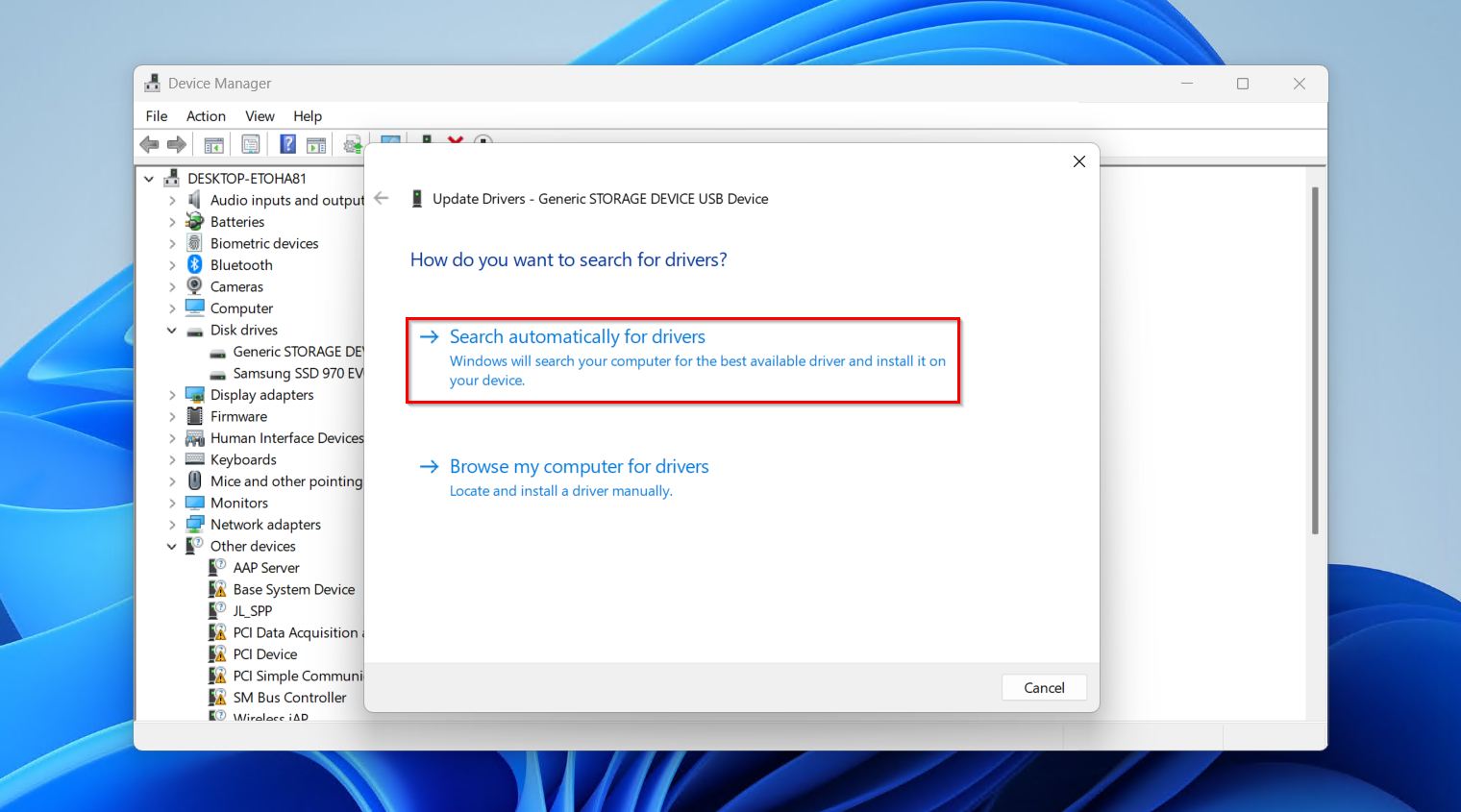
Bear in mind that these instructions are useful only if the drive is visible in Device Manager. If it’s not, then you should check your hard drive manufacturer’s website for up-to-date drivers, as they can be installed manually.
Method 3: Recover Data Using a Data Recovery Service
At this point, no other DIY fixes will work, and you should consult a data recovery service to ensure your data is safe before taking further action. They have the ability to recover data from an external hard drive that’s not detected with a higher degree of success by using industry-grade equipment in an ideal environment. Moreover, they have the expertise necessary to identify the issue and diagnose it.
These steps will show you how to recover data from an external hard drive that’s not recognized by completing a data recovery center work order:
- Open your desired data recovery service. As an example, we’ll choose the CleverFiles Data Recovery Center. Click Start Recovery.
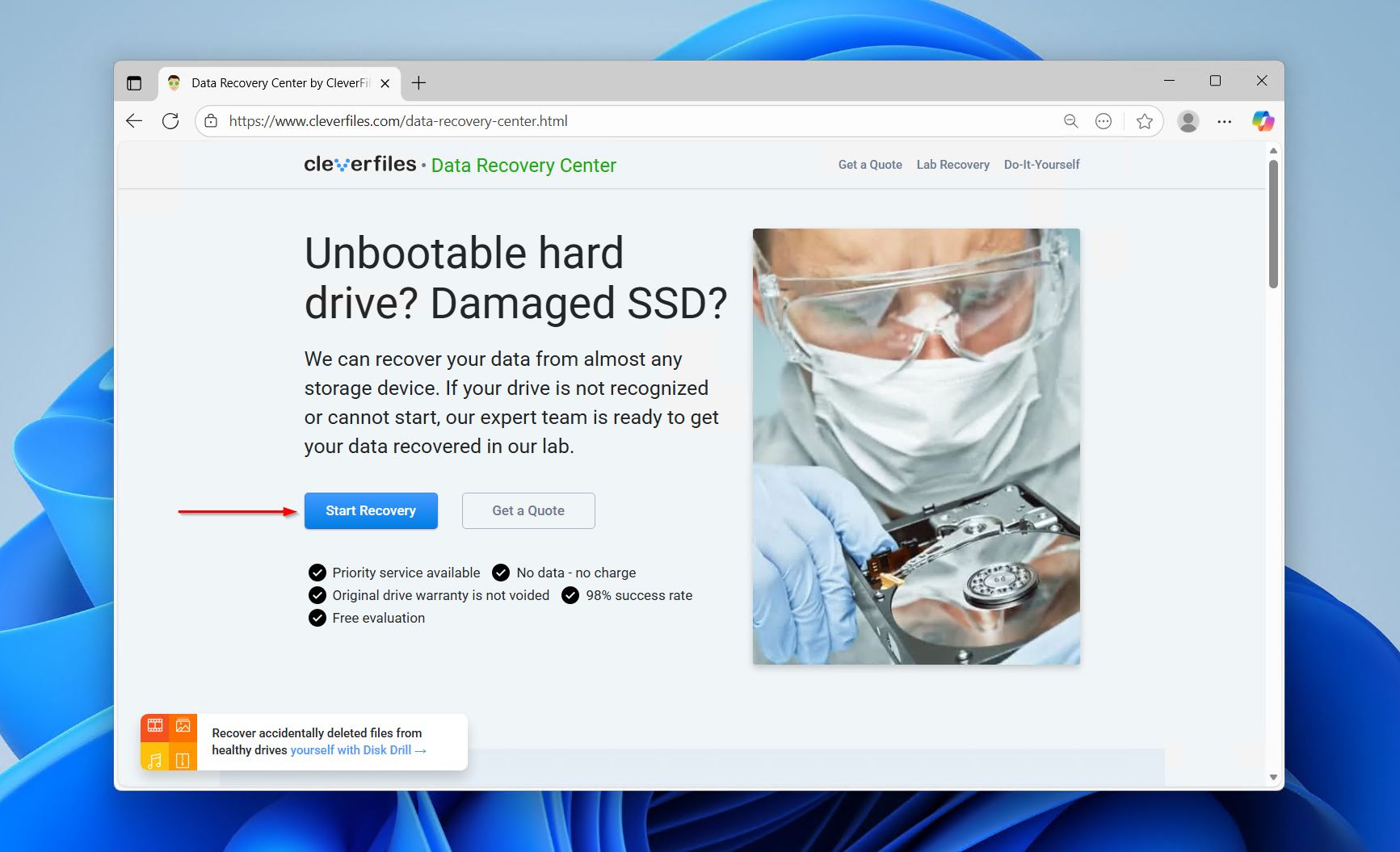
- Choose the type of service you require and begin to fill in your information.
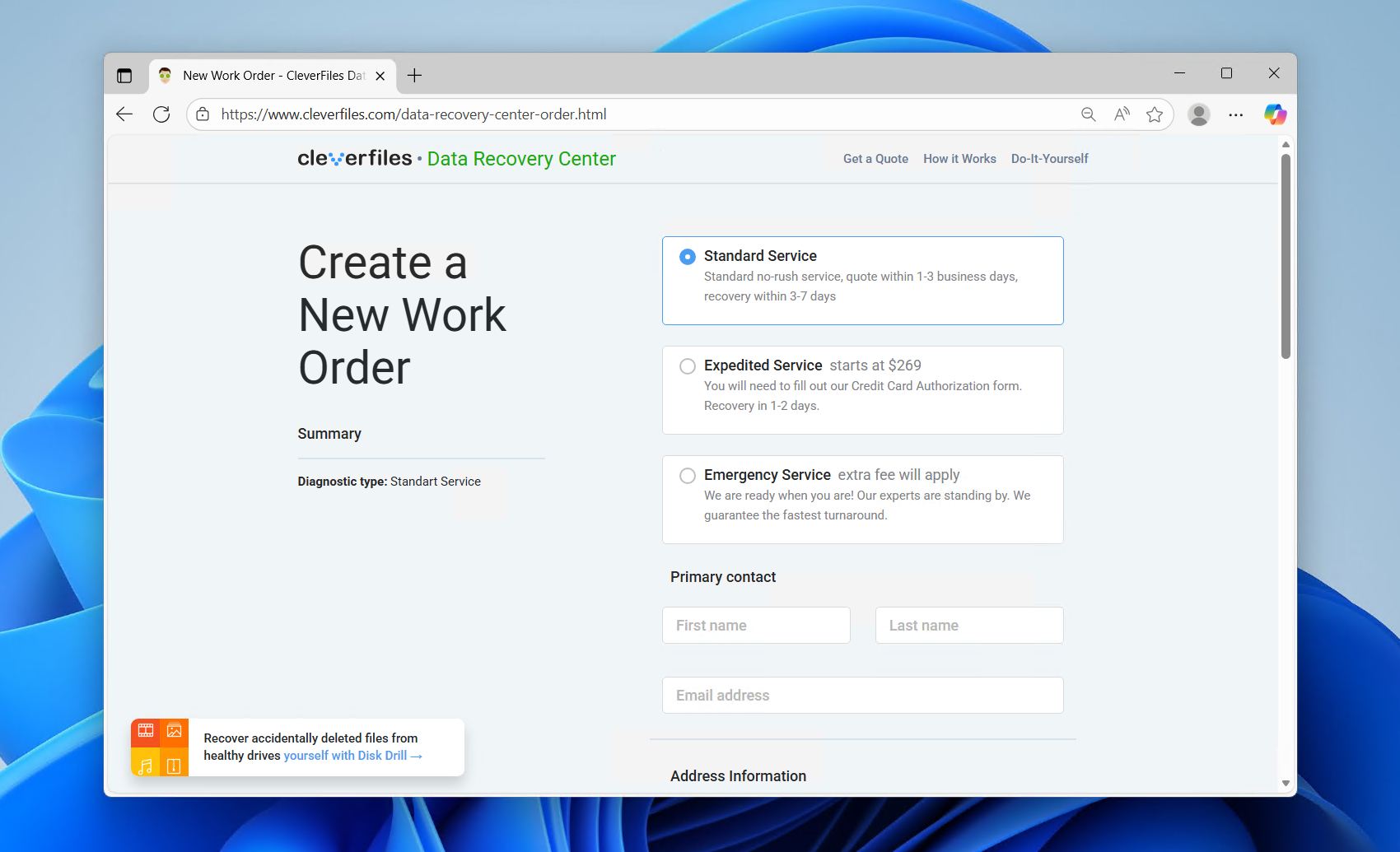
- Click Complete my work order when ready to submit.
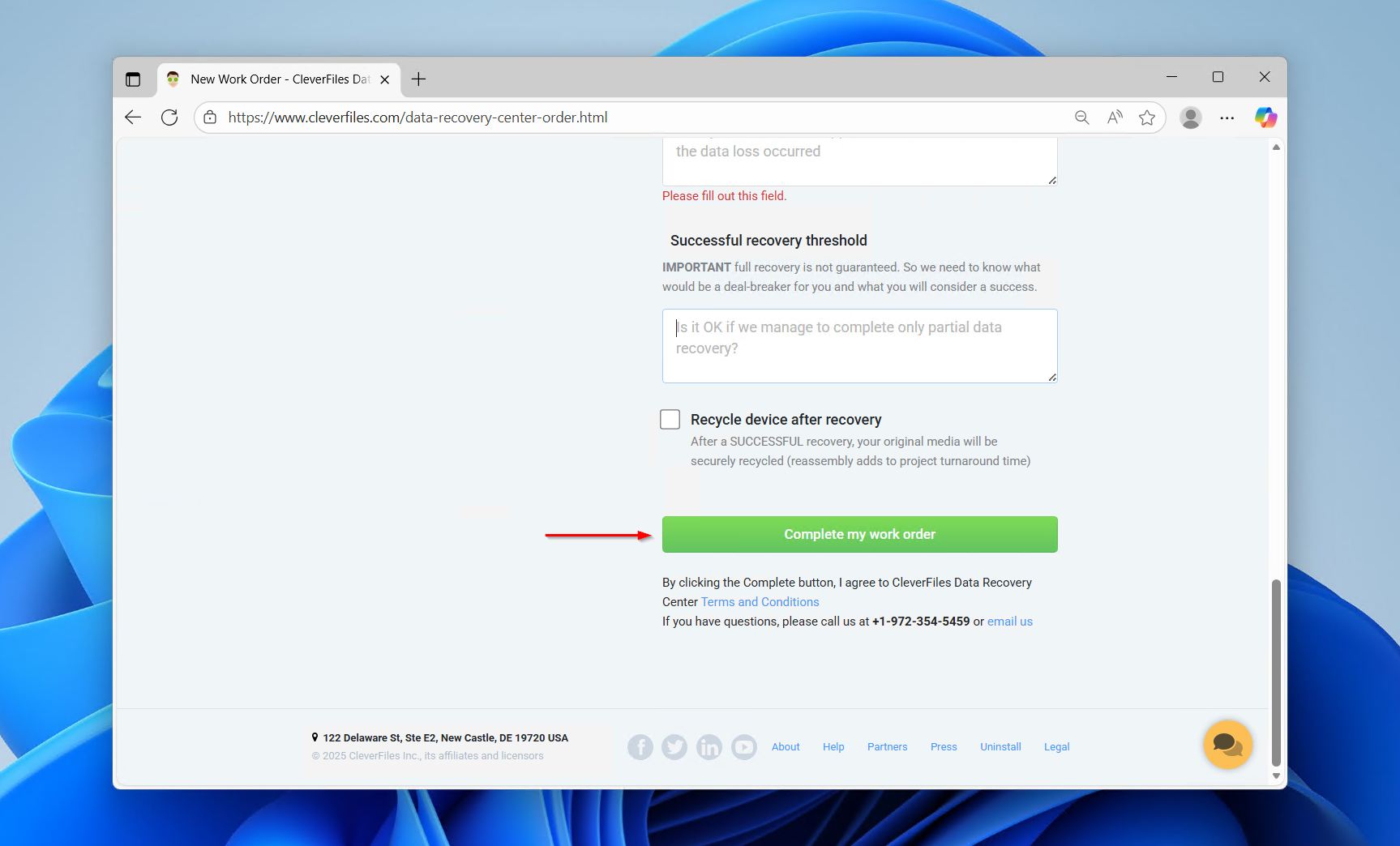
Conclusion
These practical methods will show you how to retrieve data from an external hard drive when it is not detected. If you’ve found yourself in a more complex recovery situation, reach out to a data recovery service instead.
While these methods are useful after the fact, your best bet for keeping the data safe is storing a copy of it. Back up your external hard drive regularly, and consider implementing the 3-2-1 backup strategy.
We hope this guide was helpful. Were you tackling a unique data recovery situation? Or did you run into an issue during recovery? We’d love to hear your thoughts, so drop us a comment below!
FAQ
- The cable is faulty and needs to be replaced.
- The port is blocked, preventing a secure connection.
- The USB or SATA port you’re connecting to isn’t enabled.
- A physical component is broken.

